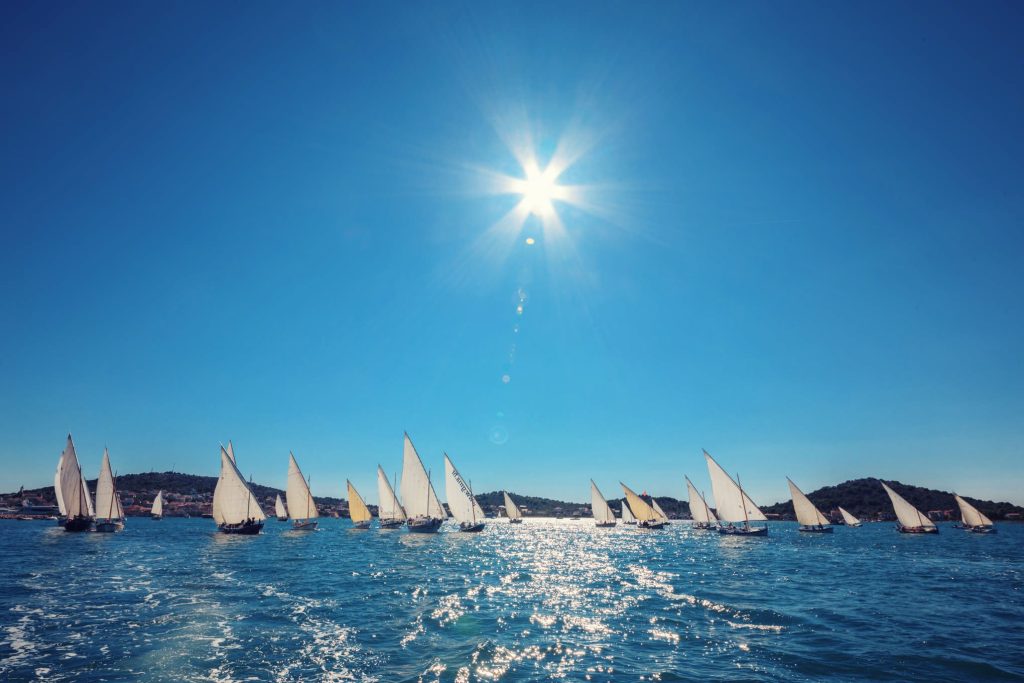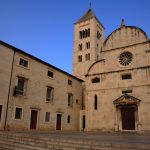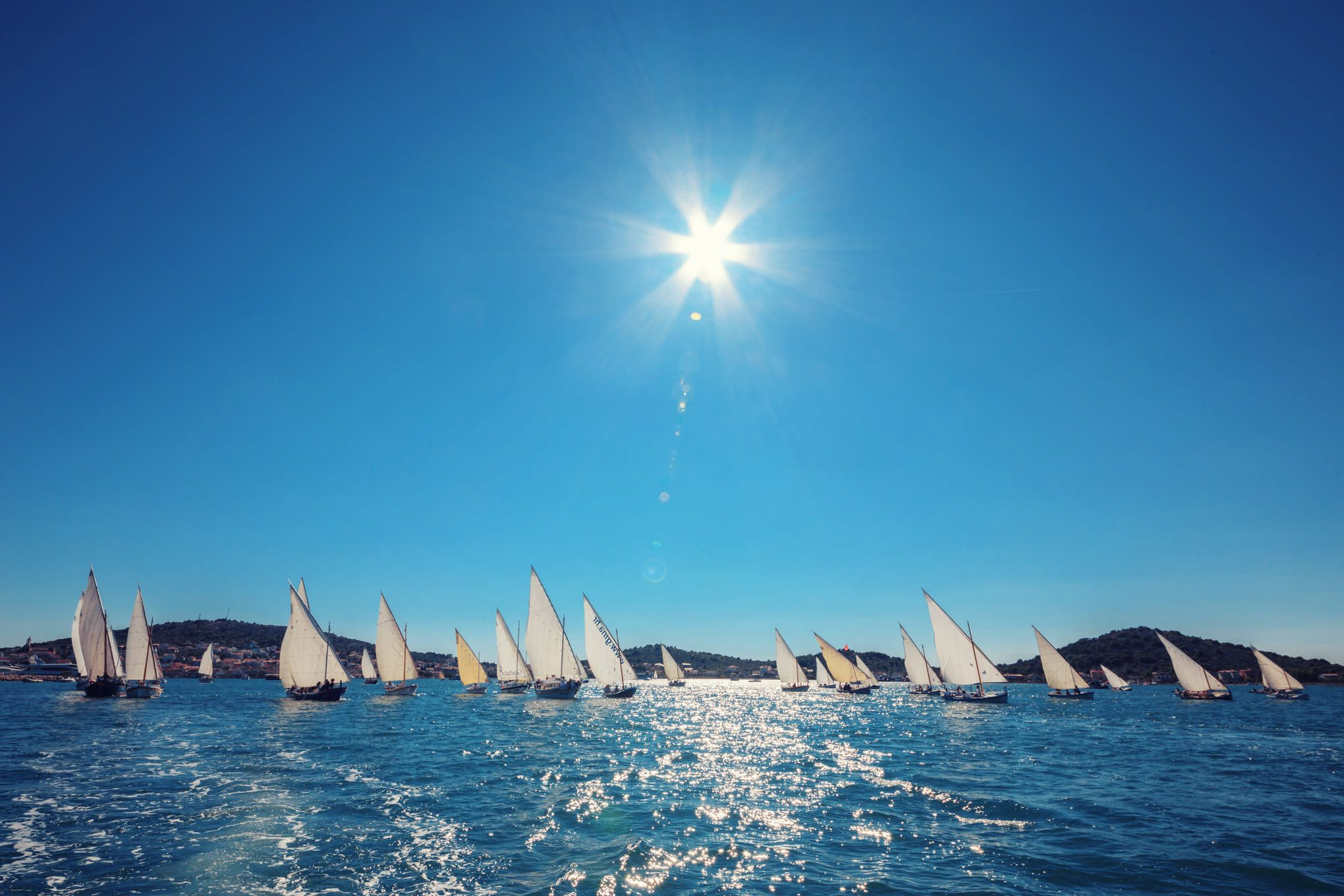
More than 1,000 islands, islets and reefs, incredible nature, world-class food and wine, history, culture and let’s not forget fantastic sailing, it is no surprise that sailing in Croatia is at the top of every holiday and bucket list. So, what do you need to know about sailing in Croatia?
1. Does sailing in Croatia suit everyone?
This question has to be #1 because it is the question I am most often asked. You’ve seen the images of gorgeous yachts and gulets sailing in Croatia; sun-drenched days, turquoise waters, armies of floating zoos… and you want in, only thing is – you aren’t sure whether sailing in Croatia is for you. Is it only for salty seadogs, cashed-up millennials or the rich and famous? Is there a middle-ground? What if you have never been on a boat before?
All great questions and my easy answer is – yes, sailing in Croatia is for everyone even for families with young children! Gone are the days when sailing was reserved only for passionate sailors or the wealthy in their super yachts. Thanks to the boom in nautical tourism over the last decade, there is a boat and cruise that suits most everyone and every budget. No prior sailing or boat experience is required to come sailing in Croatia, as most tours and boats operate with a full-crew.
So, continue reading on and be ready to book your holiday by the end, armed with all you need to know to book and have the best sailing in Croatia holiday.
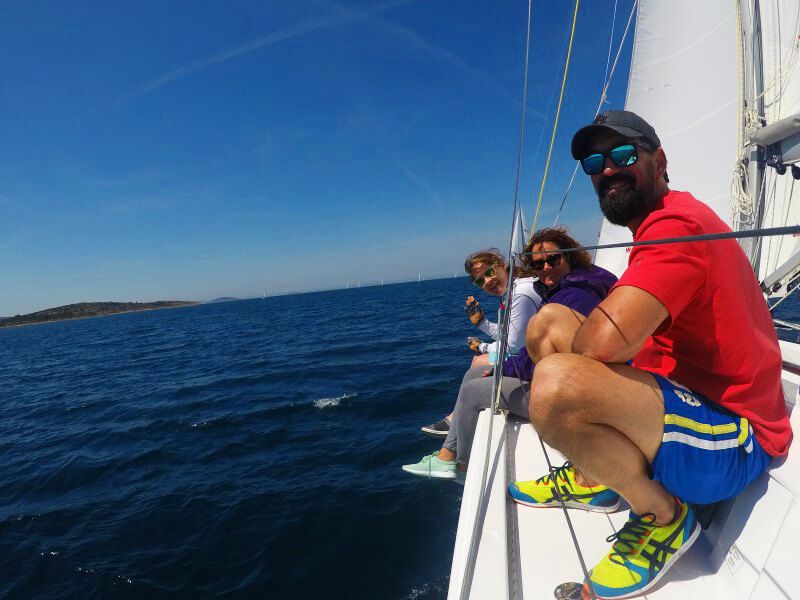
Photo credit, Tash Pericic
2. How to sail Croatia – what type of boat, charter, cruise to choose…
Now you know that sailing in Croatia is for everybody, it is time to look at some of the options. With more than 3,000 boats on the charter market in Croatia, there are myriad options when it comes to choosing a boat, charter or cruise in Croatia.
Bareboating: If you have experience sailing and are planning to charter and crew your own yacht, you will need a valid license and VHF license (see a full list of accepted licenses issued by the Croatian Ministry of Sea). Depending on the time of year you book, a 40-foot sailing yacht will cost between 2,000€ – 5,000€ for a 7-day charter in Croatia.
Crewed yacht charter: If you don’t have experience sailing or you simply want to relax and be taken care of by an experienced crew, you can charter a yacht, catamaran, gulet or motor yacht. Do a little research beforehand about the pros and cons of different types of yachts – do you really want to sail or are you more interested in comfort, how many people will you be, what is your budget? These are all questions which will help define which type of crewed yacht would best suit you.
Croatia Yachting recently won Charter company of the year and offer a wide variety of charter yachts from brand new Hanse yachts – to Bali Catamarans. They offer bareboats and crewed yachts, so it is a good place to start your research. As mentioned, a typical 40-foot sailing yacht, will cost you between 2 – 5,000€ for the week and if you charter with crew, you are looking at costs of 100 – 150€ per day, per crew member.
Gulets: Deserve their own mention, as they have become increasingly popular over the last 5 years. A gulet is a classic-built Turkish yacht, they are built for style, comfort and luxury. They typically have 4 – 6 cabins and you need to charter the whole boat (a few offer cabin-charter but this is rare), this suits families or large groups of friends. A gulet charters for anything from 12,000€ – 40,000€ for the week.
Acantho – Croatia Charter Holidays, is a boutique agency who book a variety of yachts from classic sailing yachts to gulets, and offer a complete experience by helping plan all aspects of your holiday, including booking accommodation and activities.
Cabin Charters and cruisers: If you don’t have the money or friends to charter an entire yacht, then cabin-charters and mini-cruisers are for you. Aussies and kiwis are renowned for loving group travel, it is a good way to see a destination and meet new people. But don’t worry, even though there has been some notoriety around these types of tours, they are not all ‘booze cruises’; many are age-specific.
Flotillas: the definition of a flotilla is a group of yachts, sailing around together. Nowadays, you can book a spot on a yacht in a flotilla – it is a social way to explore Croatia and meet new people. There are many companies offering this experience; no doubt you have heard the name ‘Yacht Week’, this company calls themselves a ‘floating festival’ and is very unpopular among sailors and locals, gaining notoriety for debaucherous behaviour and taking over peaceful anchorages. Yacht week is more for the cashed-up millennials looking to party in Croatia, and less for people genuinely interested in sailing or the culture of Croatia.
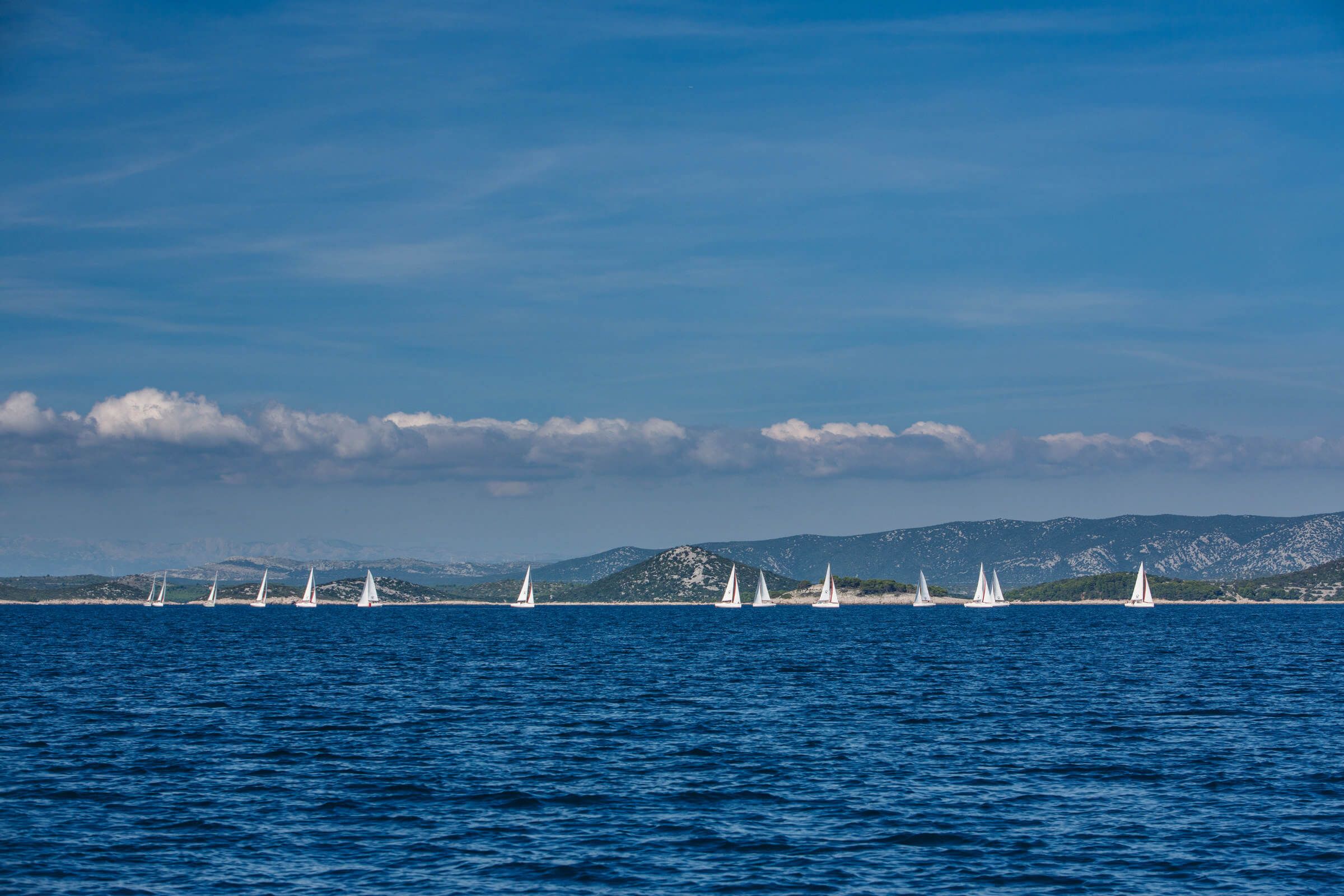
Which region to sail in Croatia?
You’re coming sailing in Croatia, you’ve decided which type of boat you want, now the next question is – which region to sail? Most charters are for 7-days and trust me, you will need all 7 to melt into your sailing Croatia holiday.
Croatia’s greatest appeal as a sailing destination lies in the diversity of its coast. With more than 1,000 islands, islets and reefs strung across its coast like an exquisite necklace, it is a sailor’s paradise, vacationer’s dream and the stuff Instagram likes are made of. There is really something for everyone.
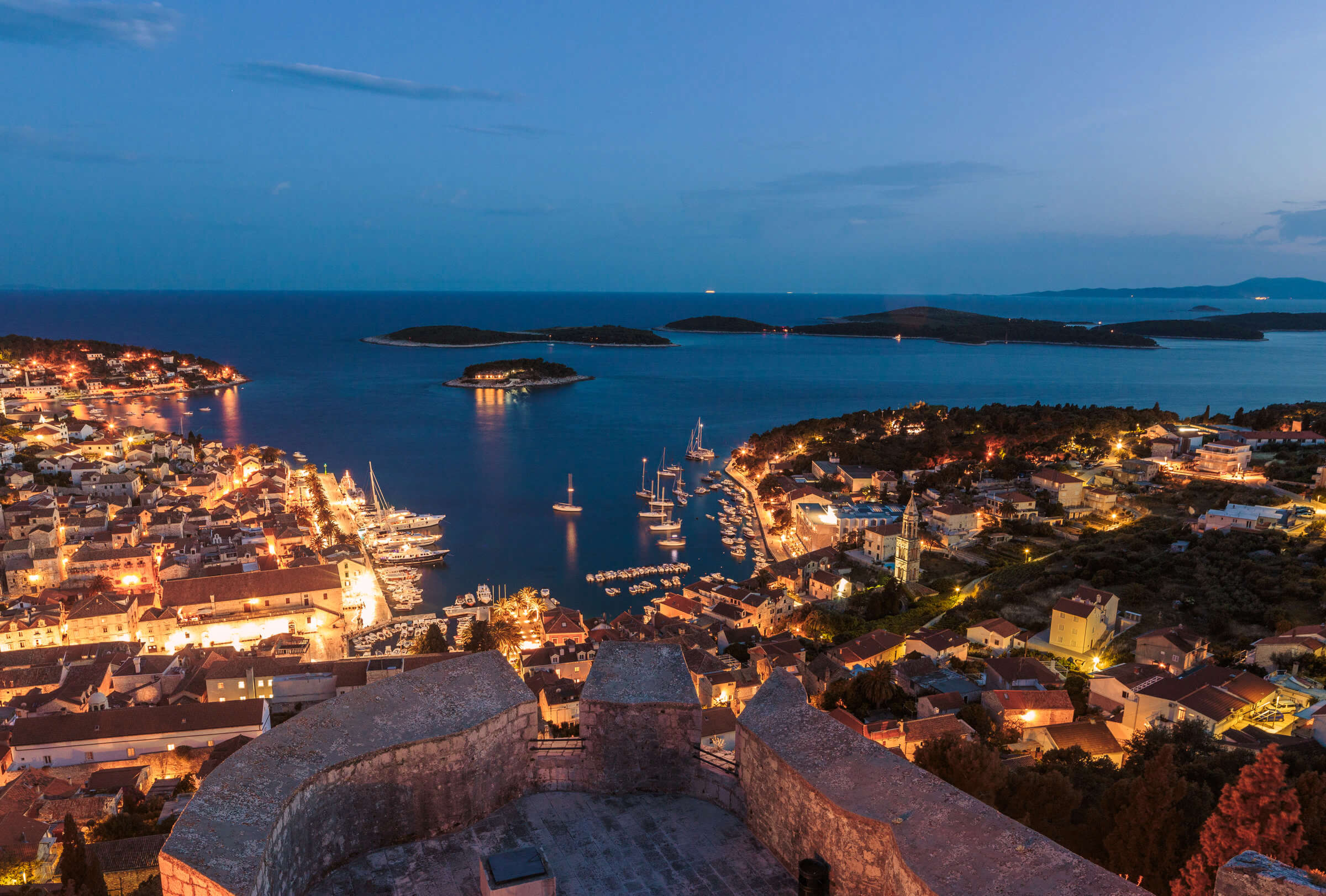
Photo credit: Mario Romulić, Hvar and view of the Pakleni at night
3. Sailing Istria and Kvarner Bay
Let’s start with the lesser-known North, the Istrian peninsula and Kvarner bay; uninhabited islands, sandy beaches, heady herb aromas, pastel buildings, Italian influenced cuisine and Austro-Hungarian architecture… with gems like Opatija, Cres, Lošinj, Rab and Krk to explore. These areas are gorgeous and better yet, less crowded than the better-known central Dalmatian islands.
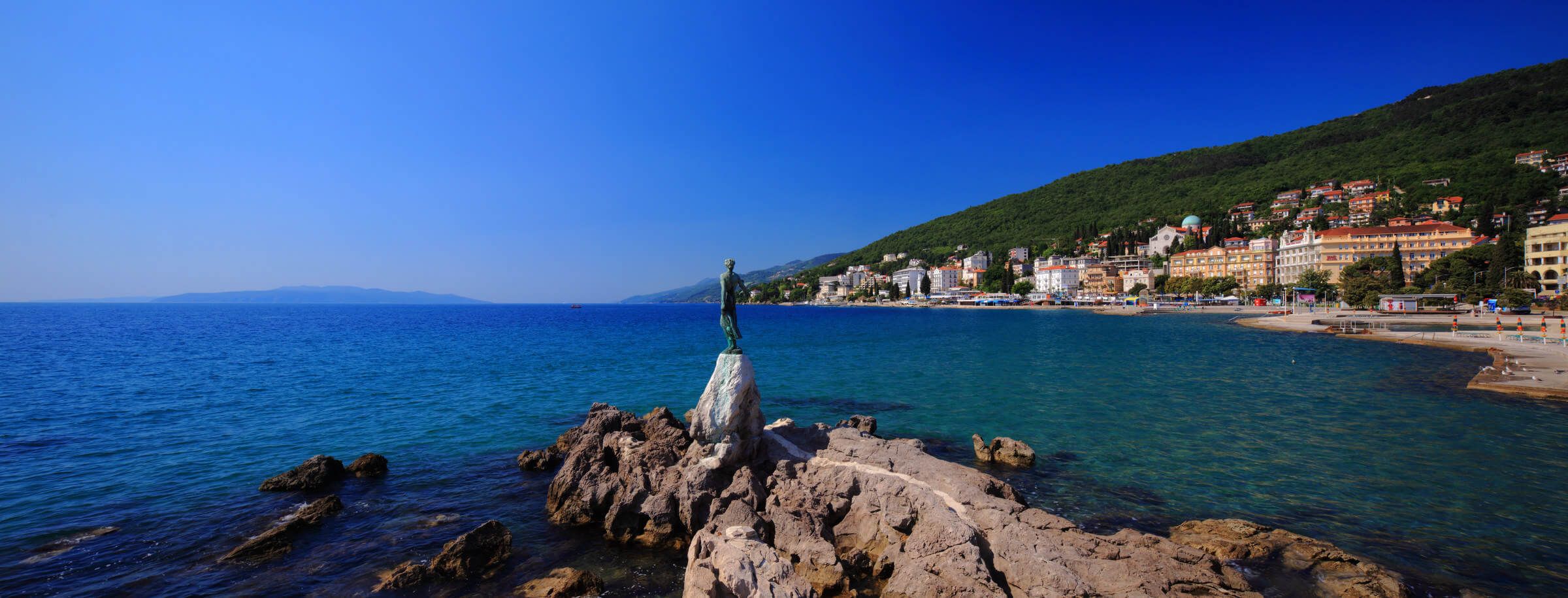
Photo credit: Mario Romulić, Opatija
4. Sailing the Kornati Archipelago
“On the last day of Creation, God desired to crown his work and thus created the Kornati islands out of tears, stars and breath.”
The Kornati archipelago is made up of 150 islands, reefs and cliffs and was enough to inspire the above quote from George Bernard Shaw. The wind flows through the islands, making for fantastic sailing and there are plenty of protected anchorages and moorings (read more in our guide to sailing the Kornati). The majority of the islands here are uninhabited, so those who choose to sail the Kornati are opting for being immersed in peace and nature.
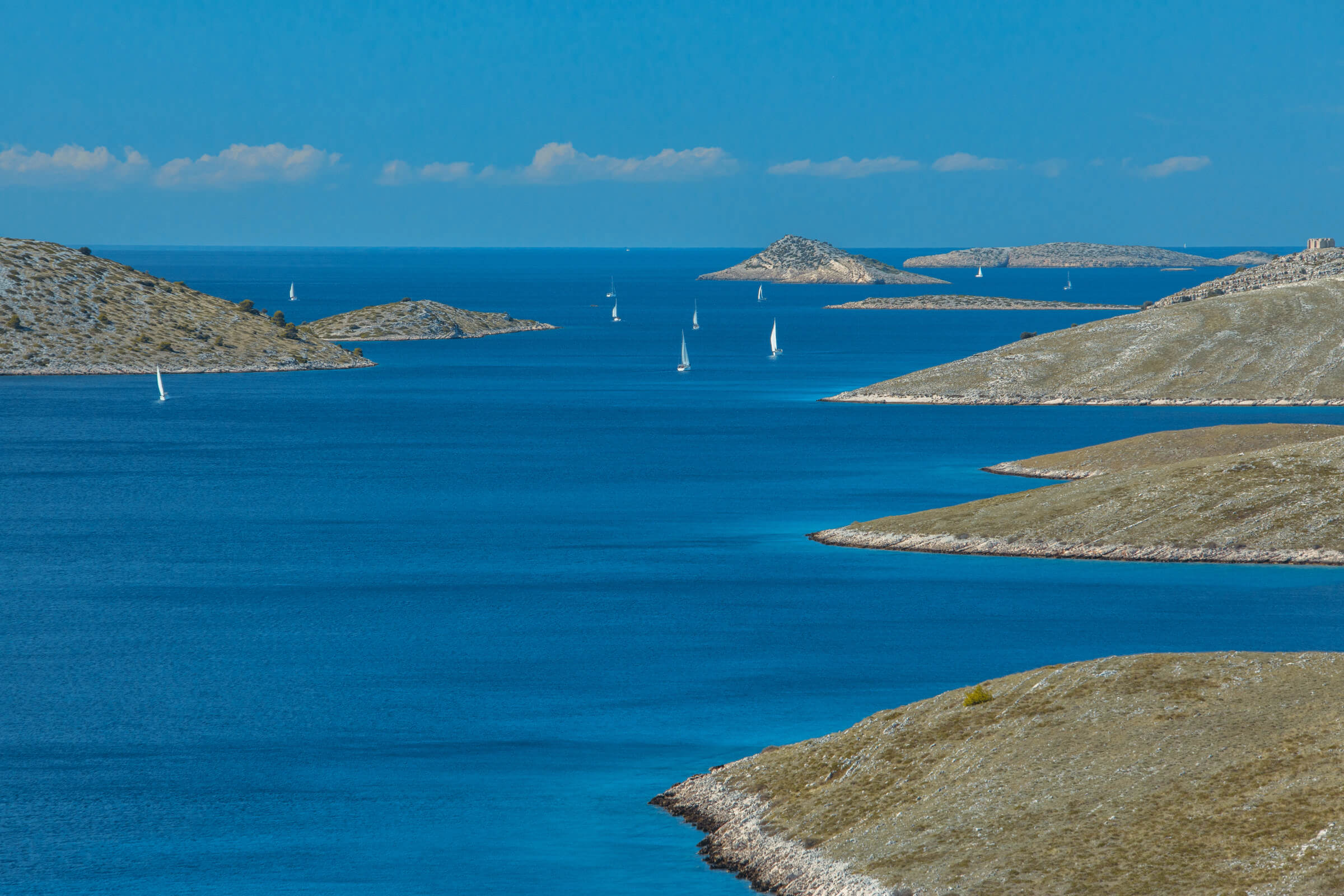
5. Sailing the Šibenik Archipelago
Šibenik itself is a gorgeous town to start (or finish) a charter, it is quite possibly one of the most underrated destinations along the coast. The sailing around the Šibenik archipelago is spectacular, one of the sixth largest archipelagos on the Adriatic with 249 islands, islets and reefs. From Šibenik, Skradin is approximately 8 nm, where you can visit the Krka National Park. Continuing on you will come across tiny jewels like Prvić, Tijat, Karprije, Žirje, Zlarin and at each of these, you will find safe anchorage, mooring or harbours. The Šibenik archipelago is for the nature-inspired – if you are bareboating, pay close attention to charts here, as there are plenty of underwater reefs, sandbanks and shifting depths.
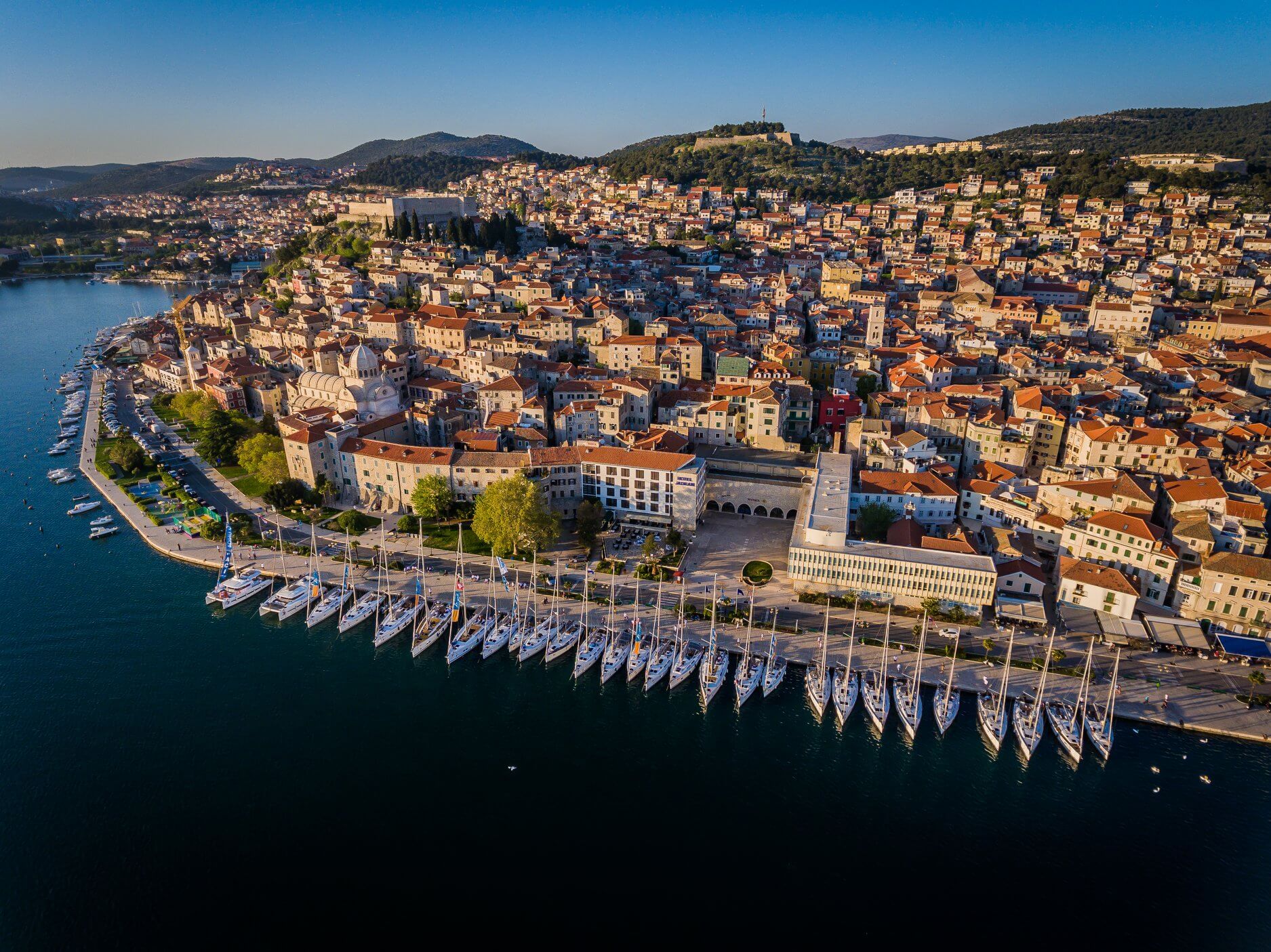
Photo credit: Croatia Yachting, Hanse Cup Regatta
6. Sailing Central Dalmatia
Central Dalmatia is the region that most are familiar with, it has become increasingly popular in recent years thanks to the ease of being able to fly to and charter from Split. First-time charterers often opt for sailing in Central Dalmatia as it has a mix of everything for holiday-makers: great sailing, history, gastronomy, ancient towns, tiny fishing villages, nightlife… Brač, Hvar and Vis are the most well-known islands in this region. You may be familiar with images of Zlatni Rat (golden horn) beach, the blue cave on Biševo and lavender fields on Hvar but don’t underestimate destinations like island Šolta – the closest island to Split, which offers stunning anchorages and a step back in time, island life as it once was. Read our full example of a Central Dalmatian sailing itinerary.
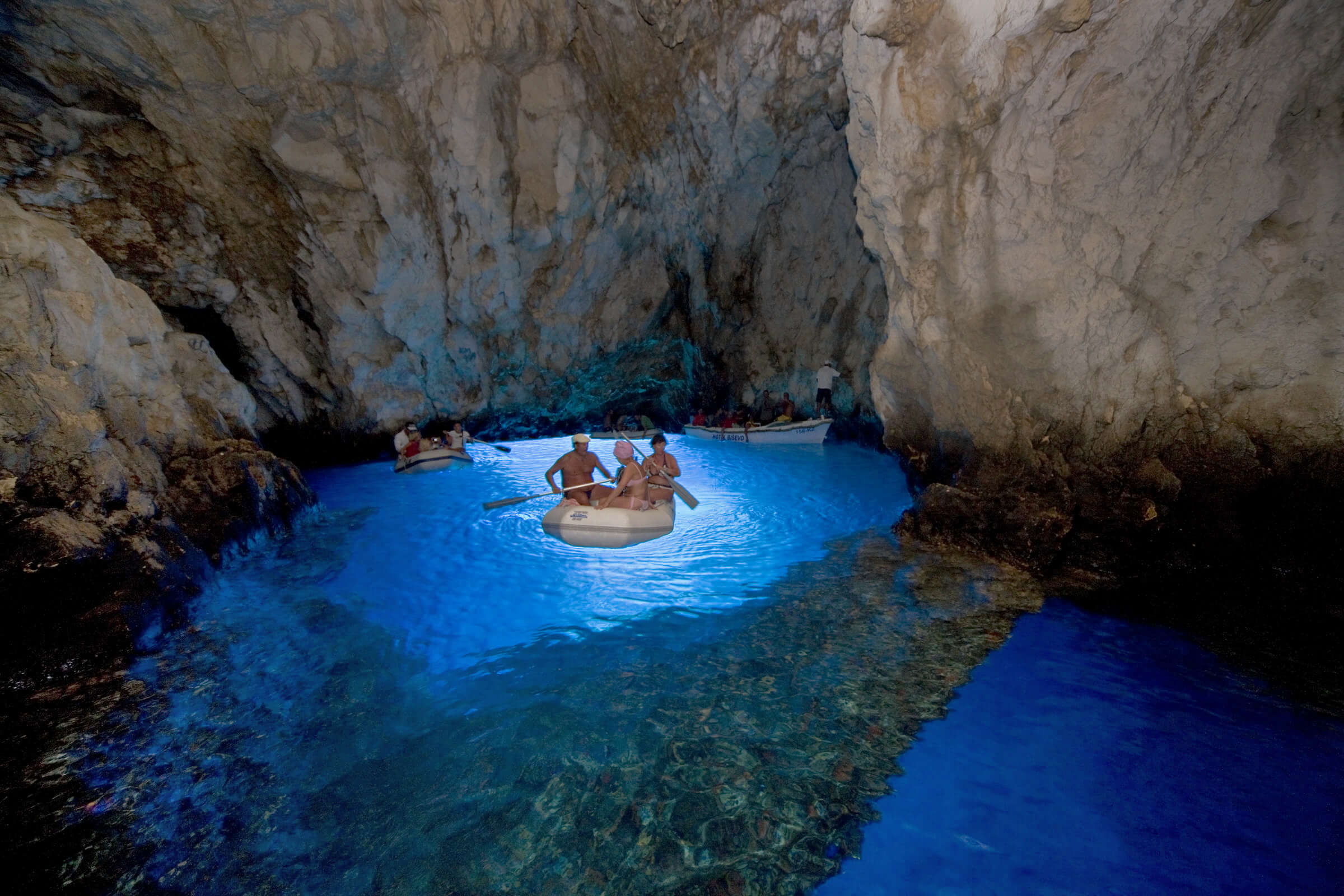
Photo credit: Mario Romulić, The blue grotto on Biševo, Vis
7. Sailing Southern Dalmatia
From Marco Polo’s Korčula, Mljet’s saltwater lakes, the Lastovo Archipelago to the rugged beauty of the Pelješac Peninsula and grandeur of Dubrovnik… southern Dalmatia has plenty of charm, history and beauty to offer its explorers. And note – on a one-way sailing route from Split to Dubrovnik, your itinerary can take in the key highlights of Central AND Southern Dalmatia.
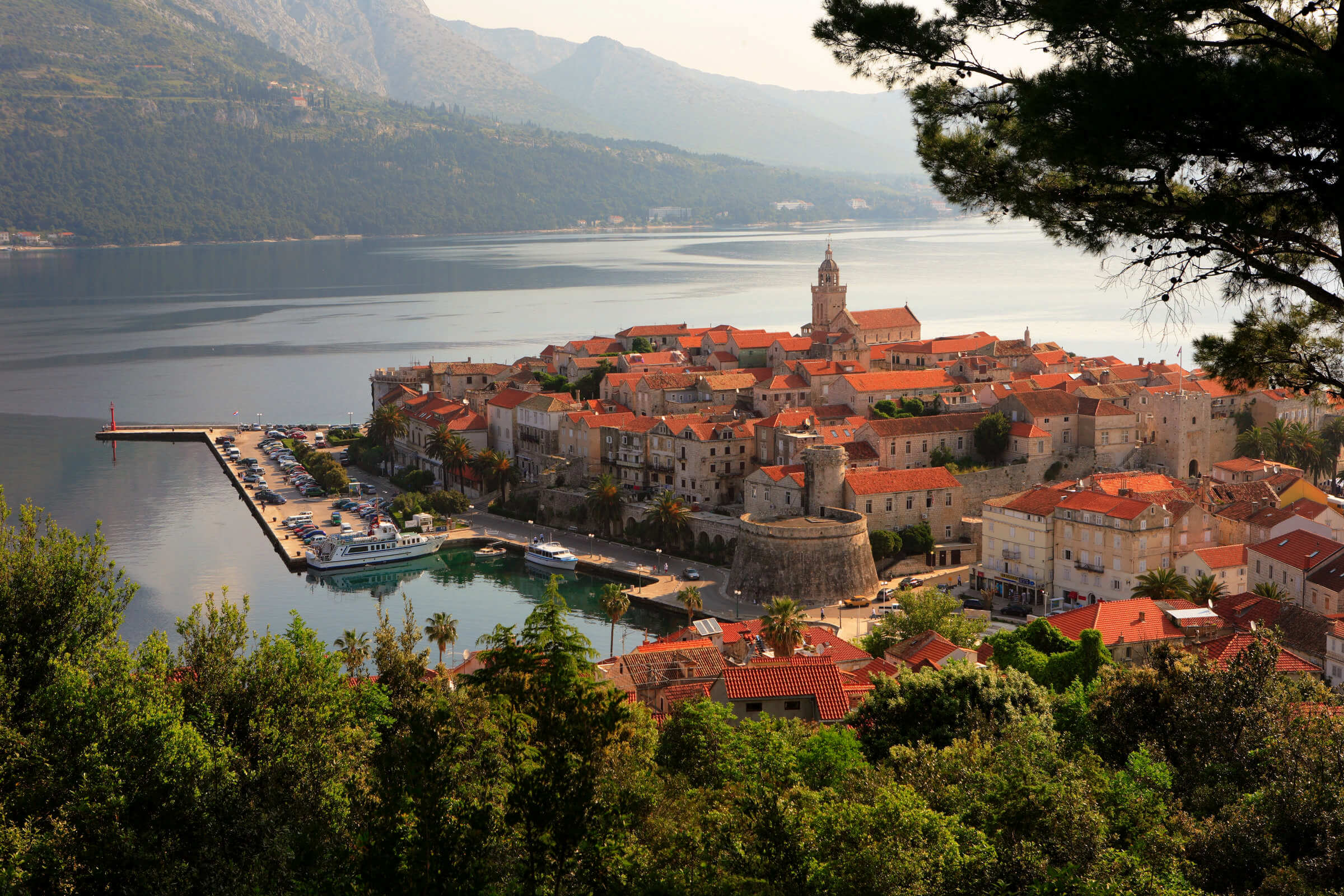
Photo credit: Mario Romulić, Korčula town
8. When to come sailing in Croatia?
The sailing season in Croatia runs from May until October, though most choose to sail in high-season – July and August. There are a few things to consider when you decide when to come sailing in Croatia.
The climate in Croatia is Mediterranean and thus summer is characterised by hot, sunny days, balmy evenings and warm seas. The average temperature in July and August sit around 27°C (80°F) and the sea is almost the same at an average of 24°C (76°F). Note, that while the average temperature may be 27°C, it is not uncommon for August temperatures to soar to and remain at 35°C+. Choosing peak-season to sail in Croatia is the obvious choice for most, gorgeous summer weather and all restaurants, bars and activities in full swing. But, with Croatia’s increase in popularity, choosing to sail Croatia in peak-season is also choosing to compete with crowds.
Temperatures in the ‘shoulder season’ (May, September, October) average 20°C (68°F) and 18°C (65°F) in the sea. Every year, the tourist and sailing season expands as more people discover the joy in being away from crowds. While the weather may be cooler and some restaurants and businesses closed, sailing the shoulder season has its advantages; fewer crowds, great sailing and cheaper marina prices being some of them. Charter prices are also drastically cheaper in the shoulder season, anything from 20 – 50% cheaper than high-season – especially if you book early.
Depending on your reasons for coming sailing in Croatia, unless you want guaranteed summer weather, crowds and nightlife – you may want to consider sailing in the shoulder season.
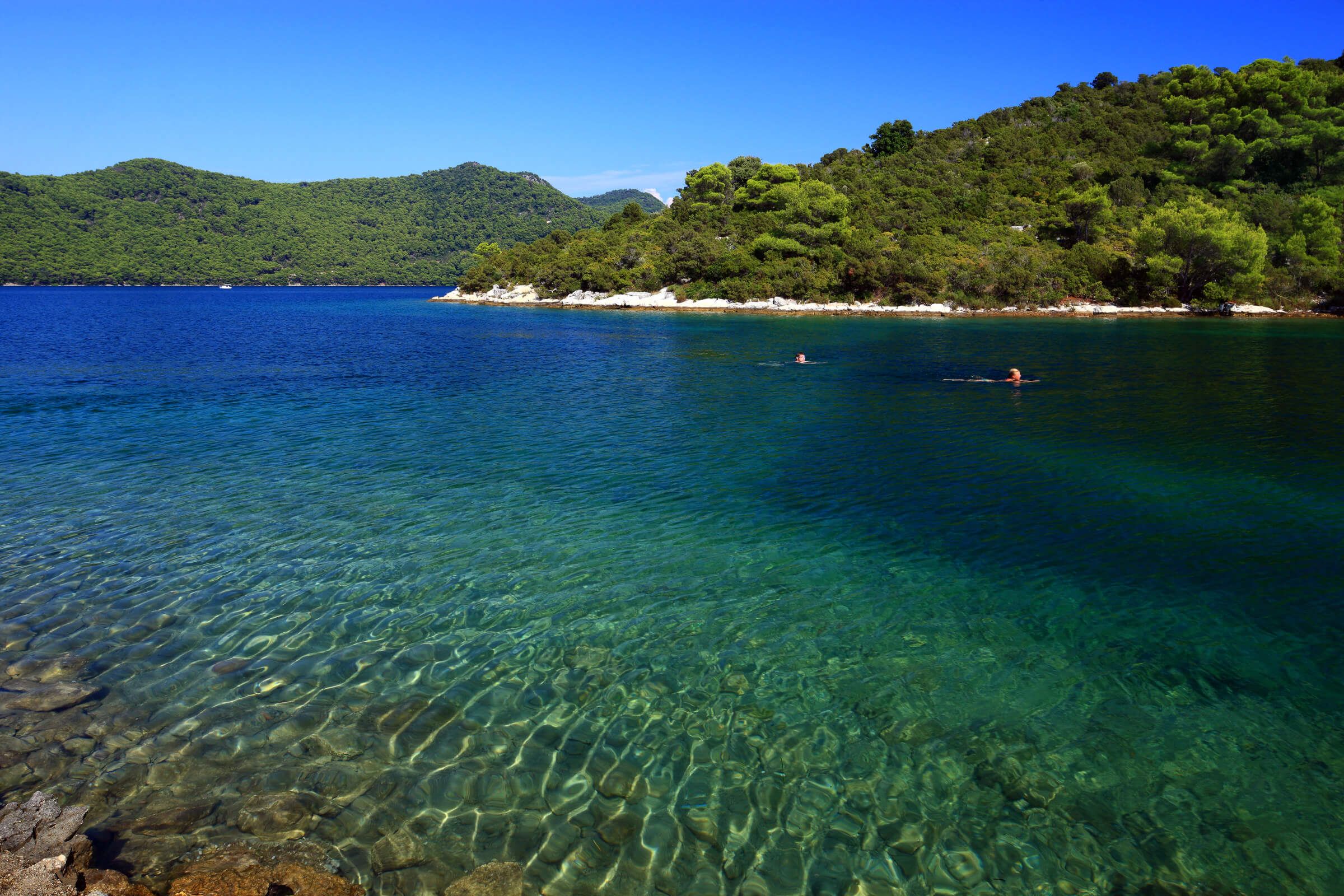
Photo credit: Mario Romulić, swimming in Mljet
9. Winds of Croatia
If you are coming sailing in Croatia, it is wise to familiarise yourself with the local winds. Particularly those that bareboat these waters for the first time. Having spoken to many professional local skippers and charter companies, they all profess that the majority of incidents that occur at sea are related to the skipper underestimating the weather. The weather in Dalmatia is glorious for the most part, however, it can be temperamental and have the propensity to change dramatically.
Even if you are chartering with a crew, it is still interesting to know a little about the winds as much of the Dalmatian way of life (and conversation) revolves around the weather. Here are a few common summer winds to pay attention to.
Maestral (Mistral) NW
Maestral is loved by leisure sailors and is known as the sailor’s friend. It is a thermal wind, which picks up around noon and collapses in the late afternoon around 5 pm. So, it is perfect wind for some afternoon sailing before finding a spot in a harbour or bay.
Though rare, Maestral can, on occasions reach gale force, creating high “dead waves” which makes for unpleasant navigation. It can particularly reach great strength in the Brač or Pelješac Peninsula as it funnels through the channels – this is one of the reasons these areas are famous for windsurfing.
Bura NNE – ENE
Bura is one of Croatia’s infamous winds and phenomenon. It is a cold NE wind that cascades down the mountains and blows out across the sea, gaining power as it does. Bura is more of a menace in winter, reaching speeds of 200 km plus in some regions but it can still occur in summer and is something to pay attention to, particularly as Bura is a wind that can go from 0 – 100 in the blink of an eye.
Burin is an offset of Bura and occurs at night. Another thermal wind, caused by the land cooling faster than the sea, it has a tendency to blow through the night and is characteristic of stable weather patterns – Maestral blowing during the day, Burin at night. While it doesn’t have the gusto of Bura, it does have the potential to blow with strength in certain areas. Pay attention to the wind reports and anchor/moor safely overnight.
Jugo SE
Jugo (Scirocco) is a SE wind, that is less common in the peak of summer but does become more frequent at the end of the season. Jugo is a cyclonal wind that is accompanied by grey skies, rainfall, big waves and strong wind. As it is a low-pressure wind, it is often associated with lethargy and a ‘cloudy mind’. Anchoring or mooring is best on the Northern side of islands for protection.
Tramontana N
Tramontana is a N to NW wind, common along the Adriatic and often signals that extreme weather conditions are on their way; rain, storms and even Bura are known to follow Tramontana. Avoid anchoring on the open west side of any of the islands; thankfully, sailing in Croatia, you are never far from a good anchorage or harbour.
Pulenat W
Pulenat is a westerly wind that occurs when a cyclone moves along the coast to the East and the winds shift from SE – W. This wind isn’t a common occurrence and typically only blows for a couple of hours but can still make a mess of the sea in that time.
For the best information on local winds when sailing in Croatia, be sure to check windy.com daily and meteo.hr is the weather site used by most local sailors.
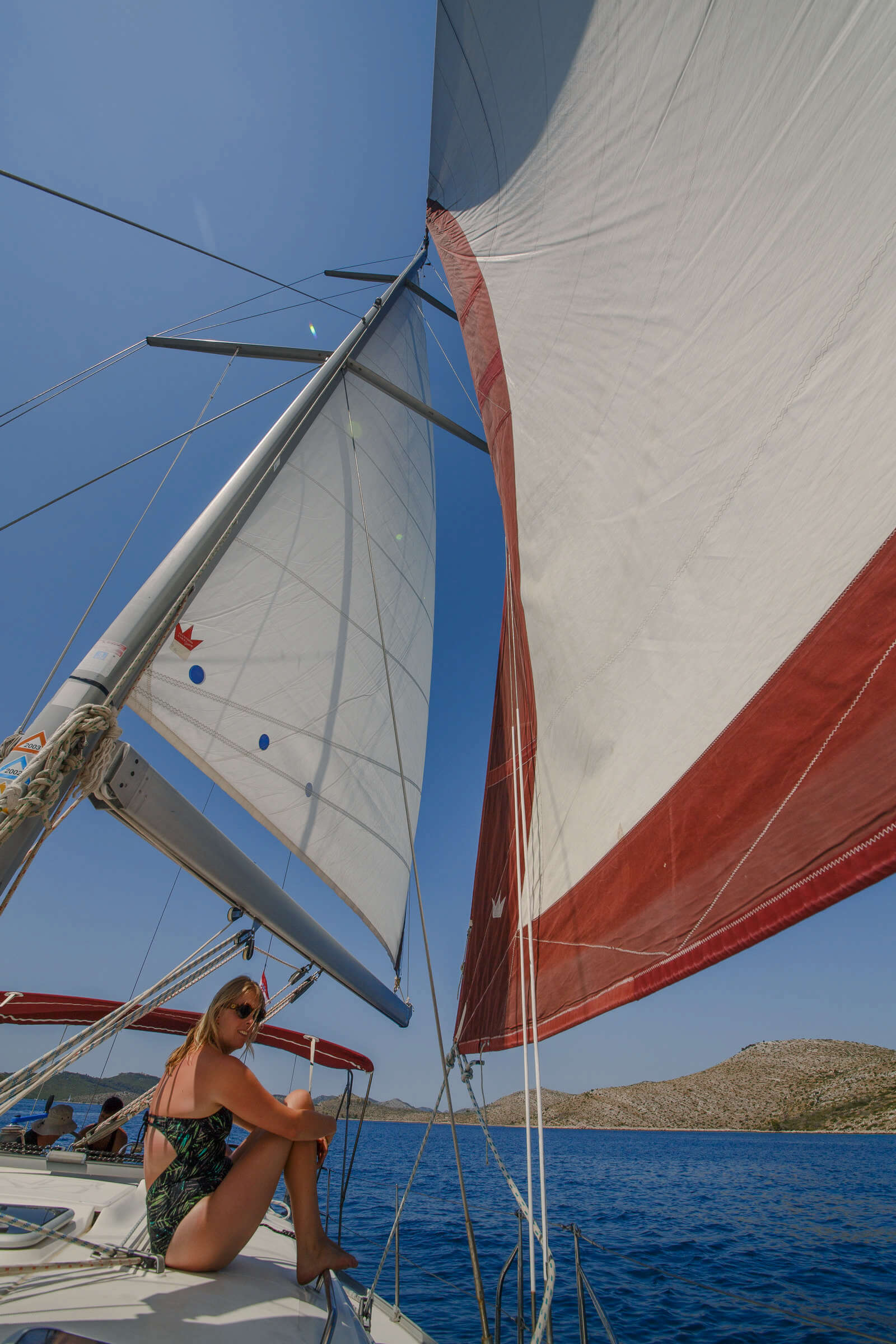
Photo credit: Mario Romulić
Sailing the National Parks of Croatia
Croatia has 8 protected National parks and 11 Nature parks; it is possible to visit four of the National parks and two Nature parks on various sailing routes. You can sail the stunning Brijuni archipelago in Istria, the Kornati archipelago, whose area is a protected National Park, visit Telašćica Nature Park, Krka National Park (via Skradin), Mljet National Park and the Lastovo archipelago.
10. Brijuni National Park
Brijuni is an area well acquainted with superyachts, the expensive berthing rates and park fees have helped keep it this way. But this also comes from its history, in 1893 a wealthy Viennese businessman made huge investments in Veli Brijun to turn it into a health resort and summer retreat for the rich. The nature, wildlife and beaches in this region are definitely worth the trouble of visiting though. It is possible to sail the Brijuni, just be sure to get the correct permissions, and note the designated bays for mooring. Read our guide to sailing the Brijuni islands.
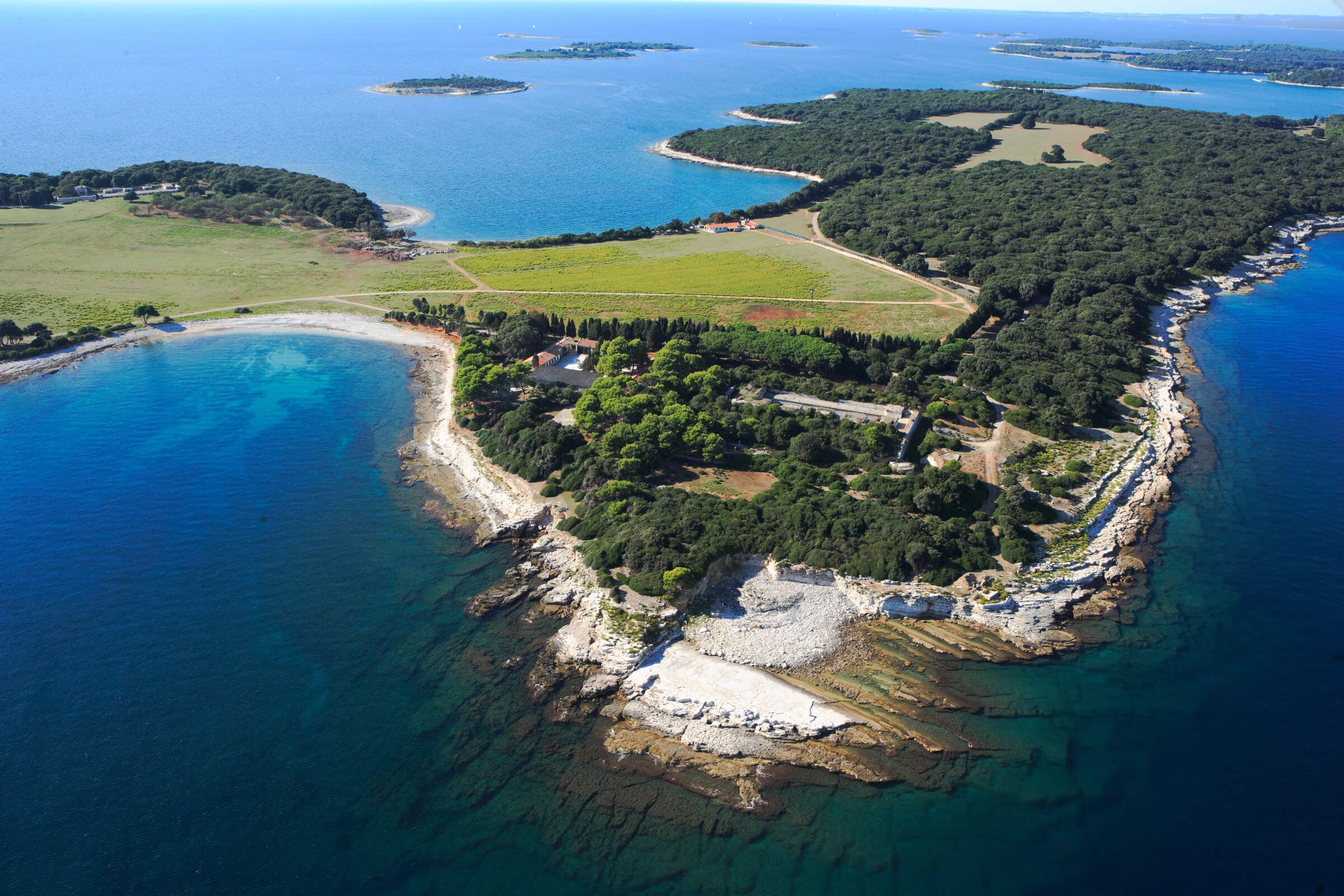
Photo credit: Mario Romulić, Brijuni islands
11. Kornati National Park
I have already mentioned the joys of sailing the Kornati islands; a collection of 140 islands, islets and reefs and beautiful wind funnelling through the channel, it is a sailor’s dream. It is also a gastronomer’s paradise, with a few fantastic local restaurants focused on traditional cuisine and seafood – picture humble restaurants, tucked into obscure bays, overlooking the famous turquoise waters of the Kornati… Read more about sailing the Kornati here.
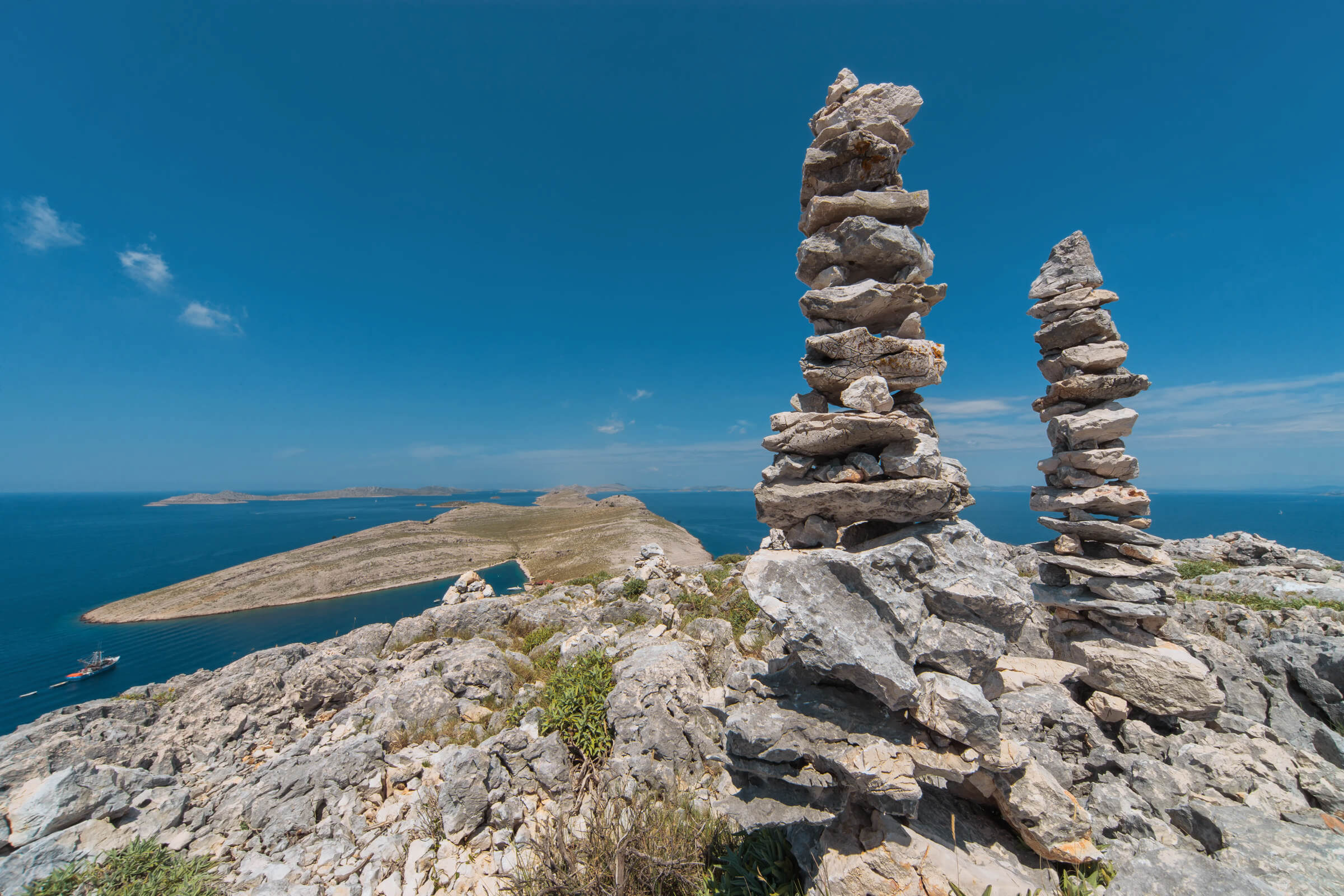
Photo credit: Mario Romulić, Sailing in Croatia, Kornati National Park
12. Telašćica Nature Park
Telašćica National Park is located on the South-eastern side of Dugi Otok island, so is en-route in a Kornati, Zadar or Šibenik sailing itinerary. The Telašćica is a protected National park since 1980 for its flora, fauna, geological and geomorphological phenomena. The bay is surrounded by 13 islands and islets, it is also the largest natural port in the Adriatic, so it is a perfect destination to spend a day or two sailing around, visiting the smaller islands and numerous beaches. Telašćica is most well-known for its saltwater lake “Mir” and the cliffs of Dugi Otok surrounding, which rise up 161 metres from sea level and drop to depths of 90 metres at the centre of the lake. Take your swimwear into the park, so you can swim in the lake which has medicinal properties. There are a number of ticket options, a 7-day ticket even includes entrance to Kornati, Telašćica, Mljet and Lastovo.
A 7-day sailing in Croatia itinerary could easily encompass solely visiting Telašćica NP and the surrounding islands; like Katina island at the entrance to the bay which has some of the most gorgeous beaches, the quaint town of Sali on Dugi Otok, or staying at uninhabited or lesser-known nearby islands like Lavdara, Žut and Iž. There are ruins on Dugi Otok and surrounding islands which date back centuries, giving testimony that this area was inhabited during ancient times. The first written record of fishing in the area even dates as far back as the 10th Century, so you can also expect great seafood in this region.
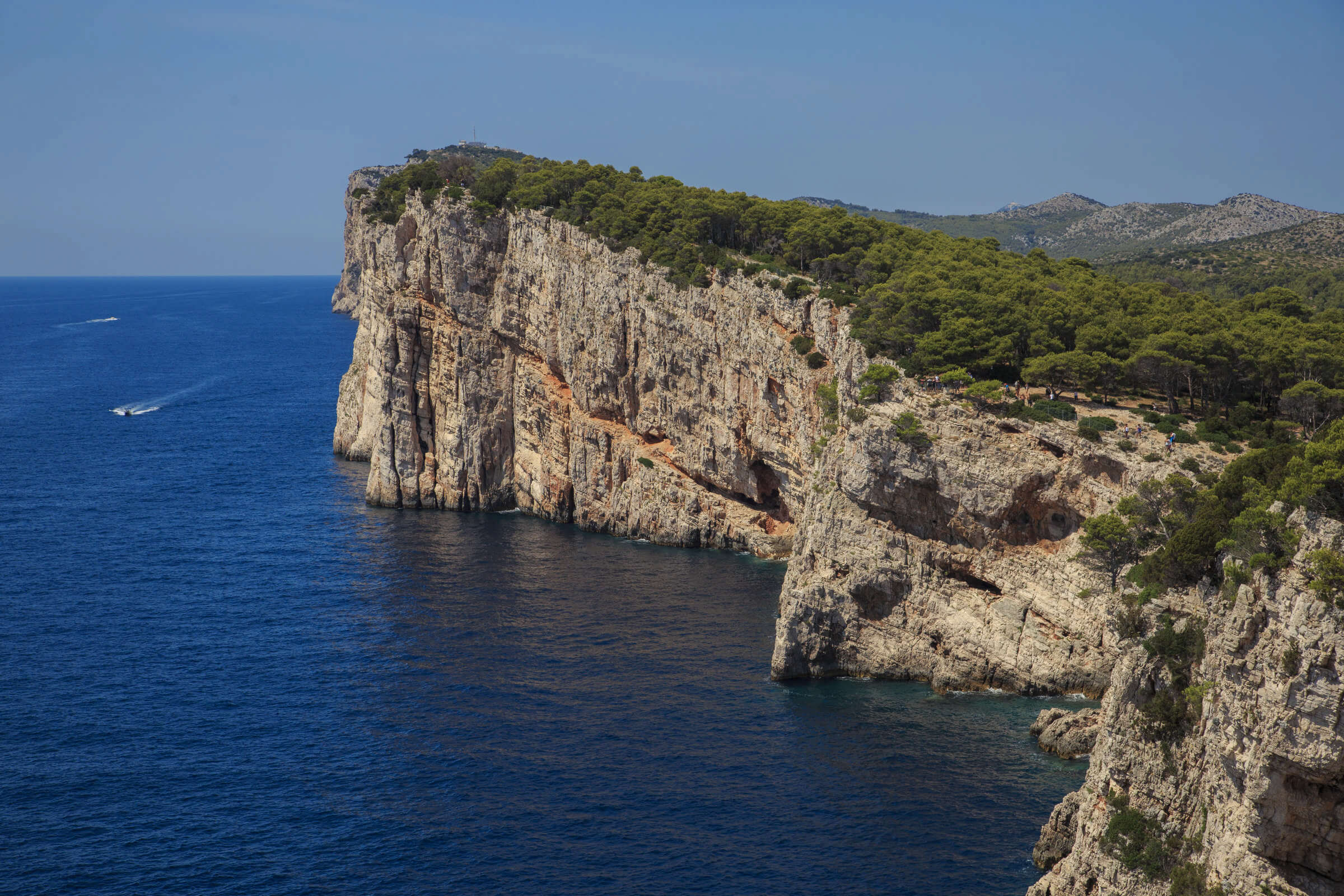
Photo credit: Mario Romulić, the cliffs of Telašćica National Park
13. Krka National Park
Sailing from Šibenik, it is easy to visit the Krka National Park. A short sail to Skradin where you can dock at the marinas in town or simply drop anchor. Access to Krka National Park is from Skradin town at the mouth of the river, where you board a riverboat to take you to the entrance of the park. Tickets cost around 110 kn per person (15€). With its walking trails, incredible nature and 7 waterfalls, plan to spend at least half a day here. In peak-season, be prepared for queues, the shoulder season is easily the best time of year to visit Krka National Park. Take your swimwear into the park so you can swim beneath the stunning waterfalls – possibly your only freshwater swimming opportunity on your sailing Croatia trip (unless you go rafting in Omiš)!
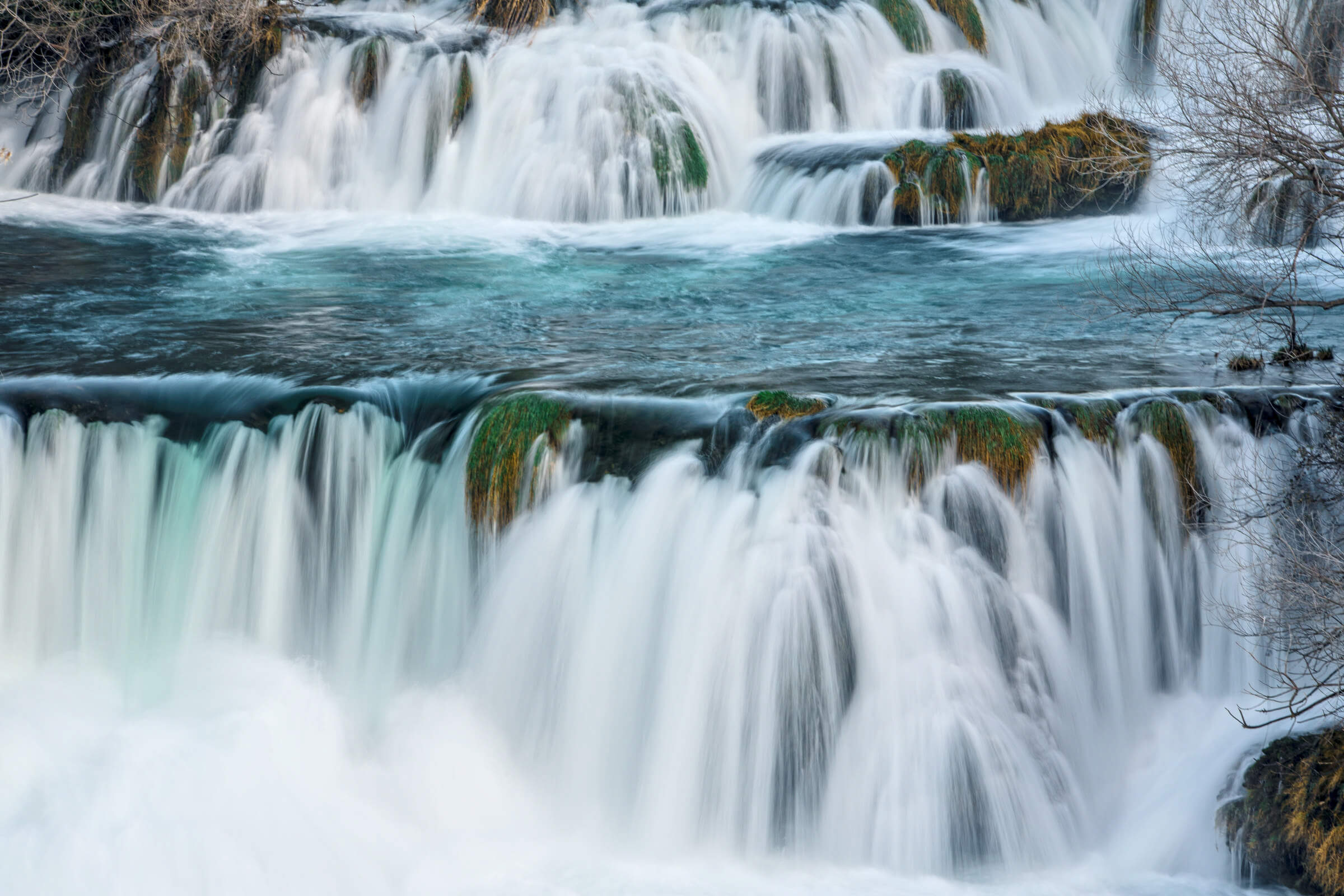
Photo credit: Mario Romulić, Krka waterfalls
14. Lastovo National Park
The Lastovo archipelago and Nature Park is comprised of 46 islands, islets and reefs. Sailing this area is definitely for those in search of nature, peace and to feel the authentic island life. Lastovo island and surroundings offer a number of deep and well-protected bays, perfect for anchoring and enjoying watersports. There are walking, hiking and cycling tracks around the island for those interested, or several great diving locations. Explore the darling stone villages with their red rooves and famous fumar chimneys, and indulge in the local cuisine. For a different type of exploration, in Sito and Kremena, you will find two abandoned submarine tunnels from ex-Yugoslavia days. Lastovo also has a fantastic cultural and music programme during the summer months, so keep an eye out for local information and events.
15. Mljet National Park
Mljet island is an enchanting island; sailing central and southern Dalmatia, this is a must. The Mljet National Park covers the western part of the island and at its centre are two saltwater lakes – Malo Jezero and Veliko Jezero (small lake, large lake). The lakes span 4 km and at their centre is an island (Sveta Marija) with a 12th Century Benedictine monastery which can be visited.
Best anchorages to be able to visit the National Park are Pomena and Polače. Anchorage is included in the National Park entrance tickets or several restaurants offer free mooring (for dining in their restaurant). Entrance to the National Park is typically 110 kn (15€). Your ticket includes a bus ride from each port to the National Park and a water-taxi across to the island to visit the Monastery. If you are feeling more active, you can rent bikes to reach the park, and then kayaks to get across to the Monastery.
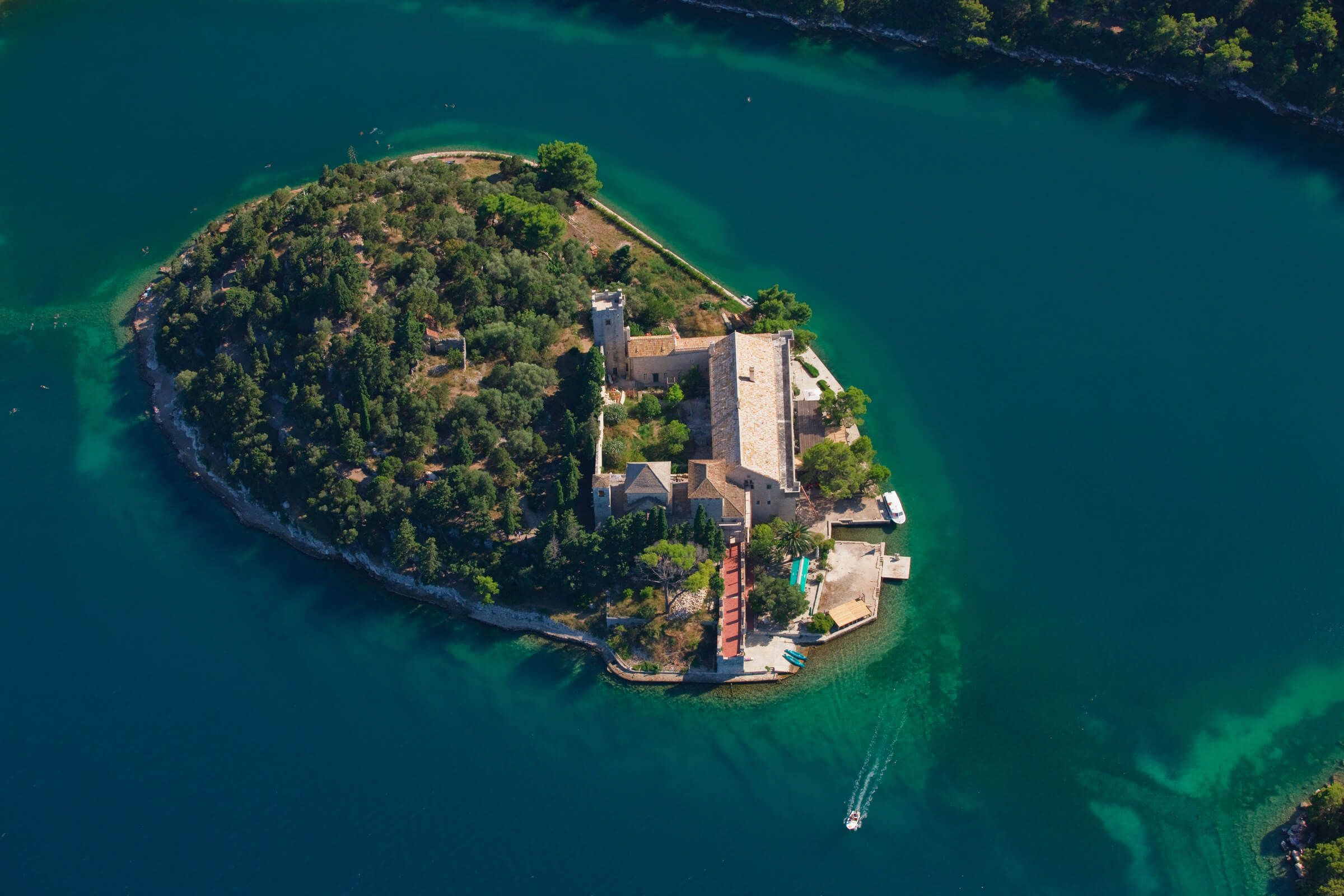
Photo credit: Mario Romulić, the Benedictine Monastery on St Mary island in the middle of the lakes of Mljet National Park
And, while it isn’t the National Park, it is worth mentioning one of the myths of Mljet – on the south side of the island, you will find Odysseus’ Cave. At 4 m wide and 20 m long, it is fun to swim into, especially with the mesmerising sapphire water. Rumour has it that when Odysseus was shipwrecked and trapped on an island by the nymph Calypso, Mljet was that island. Locals will tell you that he wasn’t trapped for 7 years, but instead chose to remain because of Mljet’s natural beauty. Regardless of the story’s merits, there is an undeniable charm and overwhelming sense of peace that anyone who has visited Mljet will attest to.
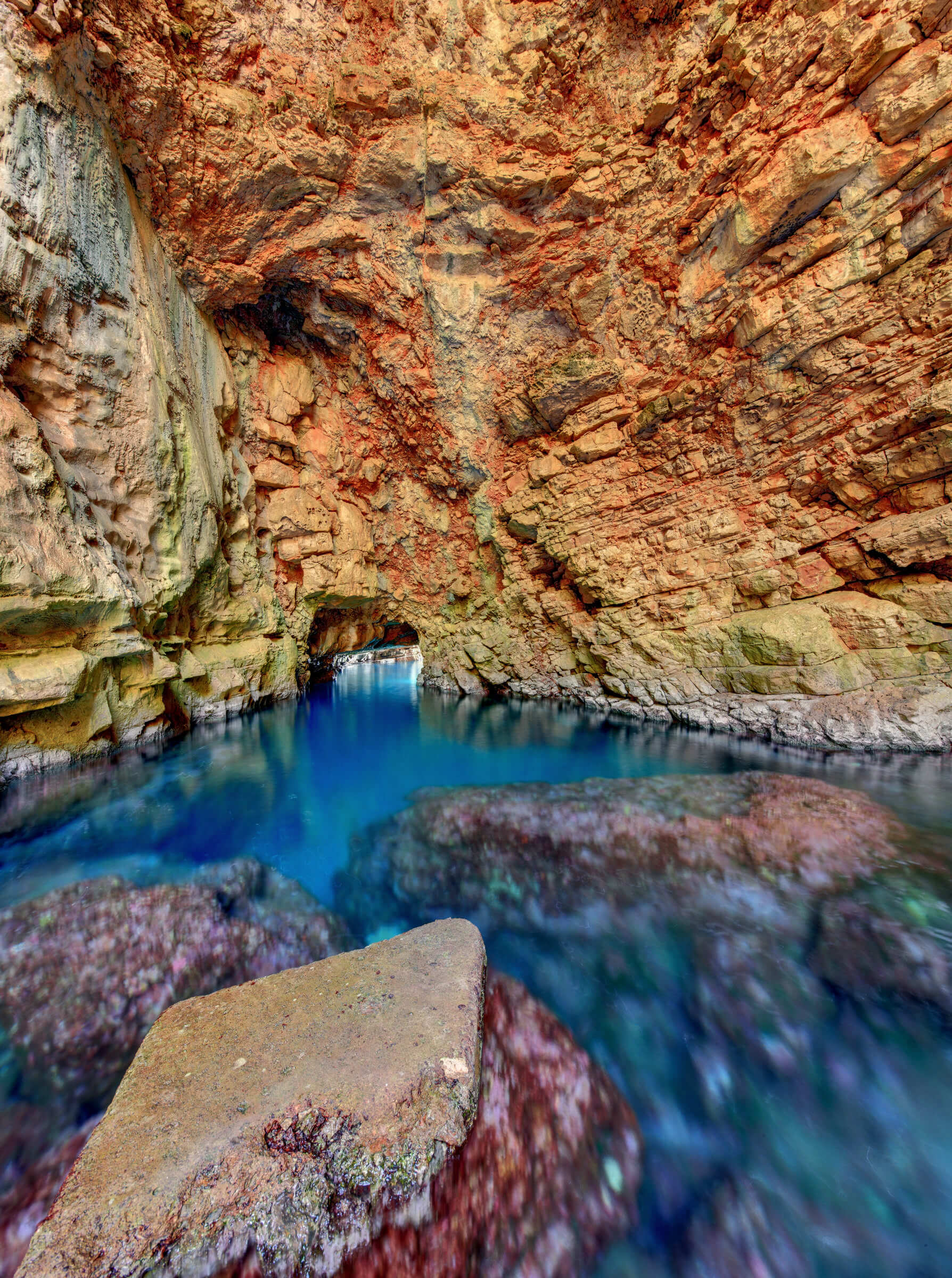
Photo credit: Mario Romulić, Odysseus’ cave
16. UNESCO and Cultural Highlights
Sailing in Croatia has so much more to offer than just the sun and sea, it has a world of culture and heritage at every turn and beneath every step. There are 10 UNESCO World Heritage sites and 15 on the tentative list, the majority of which can be visited on a sailing Croatia itinerary.
Starting with Šibenik which boasts two UNESCO World Heritage sites, the Cathedral of Saint James in the main square and the impressive St Nicholas Fortress which greets you as you enter the Šibenik canal. Keep sailing south to the historic city of Trogir, then Diocletian’s Palace in Split. Enjoy a wine tasting on the Stari Grad Plain on Hvar and finish your sailing adventure in the pearl of the Adriatic – Dubrovnik. But don’t miss these ‘tentative’ sites – the city of Zadar, the Kornati and Telašćica National Park, Primošten vineyards, the hermitage at Blaca on island Brač and the historic town of Korčula.
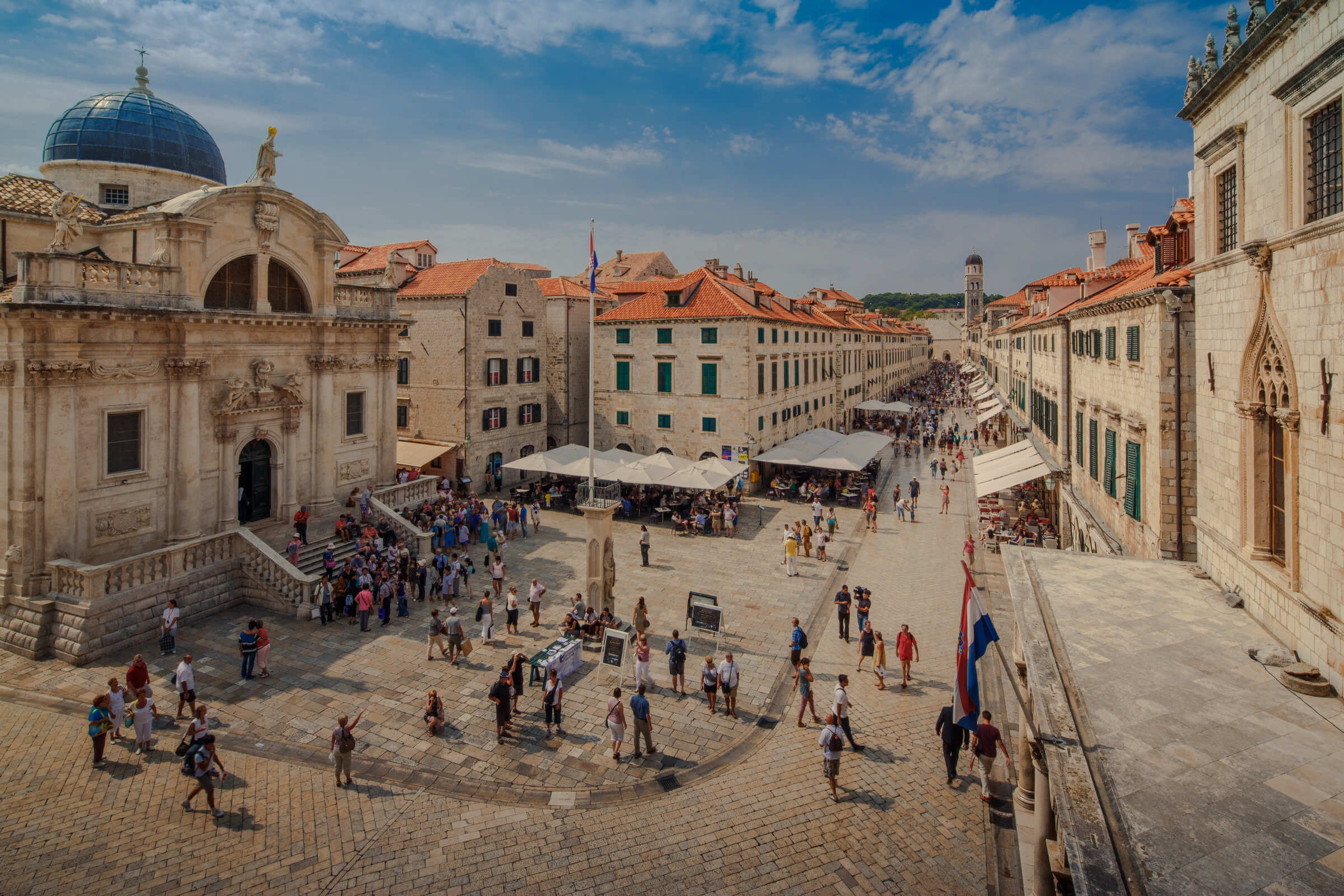
Photo credit: Mario Romulić, Dubrovnik, the Pearl of the Adriatic
The heart of Croatia is more than just these impressive monuments and cities, almost every town pays homage to this country’s history and culture, whether through the cuisine, music or traditions. Which is why Croatia has a number of protected Intangible Cultural Heritage which you will inadvertently come across while you are sailing in Croatia. From the art of dry-stone walling, lacemaking traditions in Hvar, to Dalmata’s famous Klapa (acapella) music and the Mediterranean diet itself. And, while not on the list, the Moreška sword dance in Korčula is an incredible spectacle and has been performed in Korčula for more than 400 years – during the peak-season, it is performed on Mondays and Thursdays, and in the shoulder season on Thursday evenings.
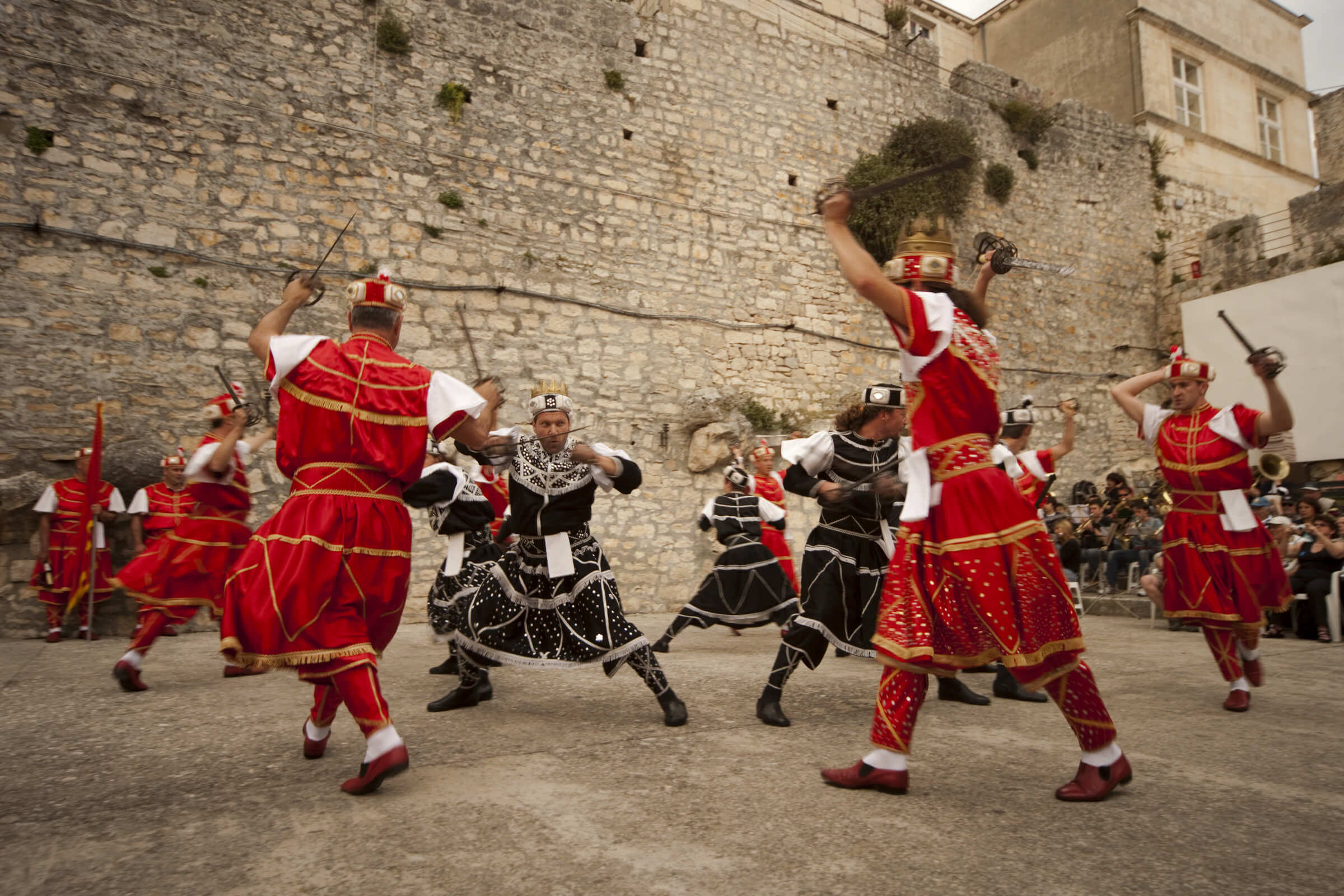
Photo credit: Mario Romulić, Traditional Moreška dance performed in Korčula
This is only scratching the surface, every destination offers a varied and rich summer programme, so pay attention to local portals and information. It is almost impossible not to live and breathe the culture and life of this country while you are here, how many other sailing destinations can say the same?
17. Active Activities while Sailing in Croatia
For some, simply the act of sailing Croatia is enough but for those who want to get a little more active, there are plenty of options. Most every island offers a number of activities from biking, hiking and kayaking, to SUP tours, quad bikes, diving and climbing. Island Šolta has even introduced E-Bikes to make biking the hilly island more accessible to everyone.
AndAdventure is one of the leading active holiday companies in Dalmatia and they offer customised sailing tours that can incorporate all sorts of activities – like Sail & Kayak tours. They also have daily activities that you can coincide with your sailing trip, like rock climbing on island Hvar! Omiš is another town along the coast which focuses on Adventure tourism, here you can go rafting on the lush Cetina river, canyoning, rock climbing, mountain biking, quad biking…
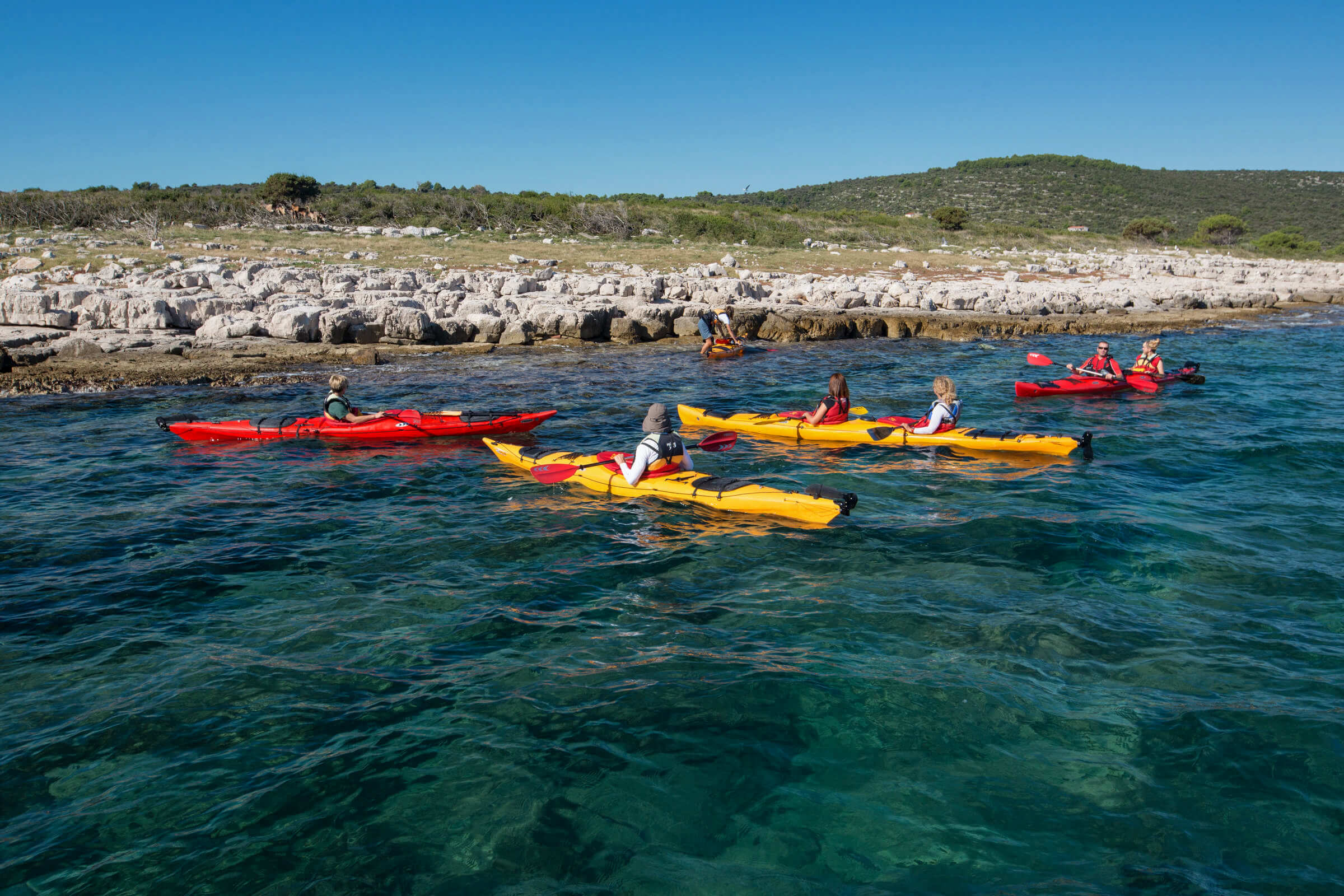
Photo credit: Mario Romulić, kayaking with AndAdventure
Bol on island Brač and the Pelješac Peninsula are both famous for kite and windsurfing and there are schools dotted along the beaches here for those who want to learn.
For something even more unique, how about learning to freedive with world champions or go rock climbing/deep-water soloing from your own yacht with a private guide? What about wellness? Yoga and meditation retreats are also available in Croatia, if you charter privately you can inquire about having a yoga instructor onboard. Basically, your sailing in Croatia holiday is only as limited as your imagination.
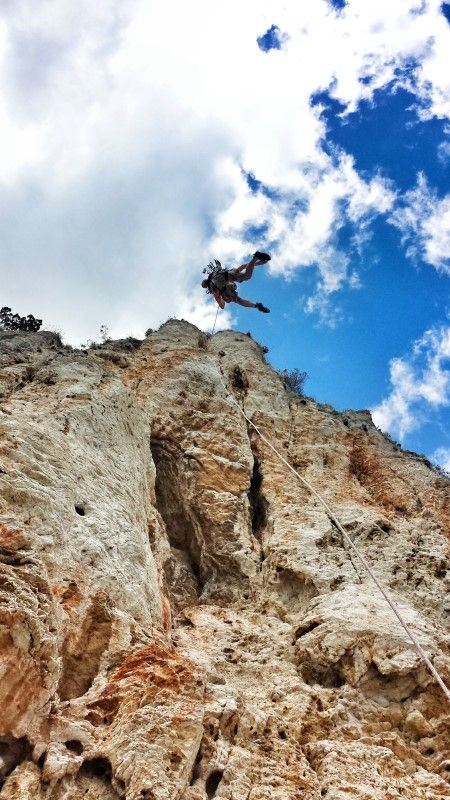
photo credit: AndAdventure, rock climing on island Hvar
18. Scuba Diving in Croatia
Scuba diving in Croatia is a great addition to a sailing holiday. However, to do so, you will need a valid diving certificate recognised in Croatia: CMAS, PADI, SSI, NAUI, IANTD. Be sure to bring a copy of your certificate along with you, otherwise, you will not be allowed to dive. A diving permit is also required to dive in Croatia, but this is typically handled by the dive centres on the day and costs around 100 kn (14€).If you are not a licensed diver but want to get certified, this option is available for you in Croatia, offered by a number of diving centres along the coast.
The underwater world of the Adriatic is littered with shipwrecks, marine life, coral formations and underwater caves – a scuba diver’s dream. The underwater museum in Mali Lošinj is perfect for beginners at only 12 m depth and more advanced divers should visit the Baron Gautsch wreck from WWII, which spans from 28 – 42 m depth. The Prvić tunnel, which stretches beneath the island of Prvić for 25 m is also a ‘must-dive’, with a variety of brightly coloured gorgonians, sponges and shoals of fish. The area around Vis island is also carpeted with various wreckages, from a B-24 Liberator plane to cargo ships, tugboats and the 99 m Re D’Italia which was sunk in 1866 during the battle of Lissa. Mljet, Dubrovnik and Lokrum also offer wonderful diving locations, wreckages and underwater flora and fauna.
Note that most of the diving locations are beyond 40 m, so you will need to be deep sea certified. If you want to dive, plan it alongside your itinerary and book in advance, especially in peak-season. Most diving centres and locations require 5 or more hours, so be sure to set aside an entire free day.
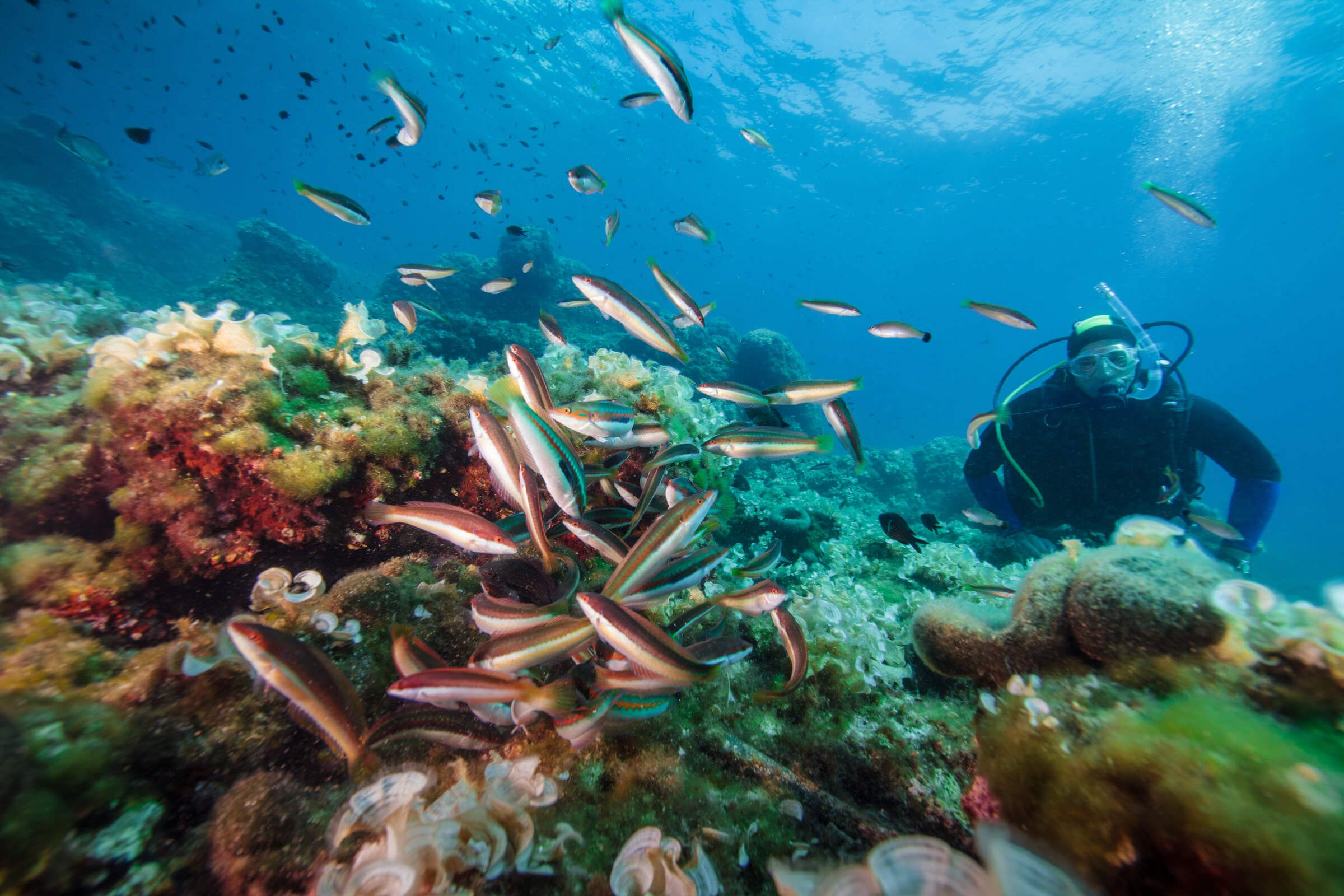
Photo credit: Mario Romulić, scuba diving in the Adriatic
19. Cuisine and Gourmet Highlights in Croatia
Croatia may not be on the world map for its gastronomy scene like Italy, France and Spain but it should be. Even the late Anthony Bourdain thought so:
“I’ve had no idea what Croatian cuisine was. Zero! I’ve had no picture in my mind. This is world-class food, world-class wine, world-class cheese. The next big thing is Croatia! If you haven’t been here yet, you are an idiot! I’m an idiot!” – No Reservations, 2012.
Quite a recommendation. Having sailed Croatia for more than five years, I can hand-to-my-heart say that every week, a genuine highlight of sailing in Croatia for our guests was the cuisine. It should go without saying that seafood in Croatia is exceptional, from fresh grilled fish and squid to the famous Ston oysters. There are also many traditional dishes that shouldn’t be missed while sailing in Croatia: brujet, gregada, crni rižot (black risotto), grilled sardines or lešo fish and peka (veal, lamb, octopus slow-cooked under an iron bell for 3 – 4 hours). Don’t forget to order some pršut and Pag cheese for an entree, drowned with award-winning olive oil from Brač, Šolta or Istria, oh and speaking of Istria – truffles, please do try some truffles.
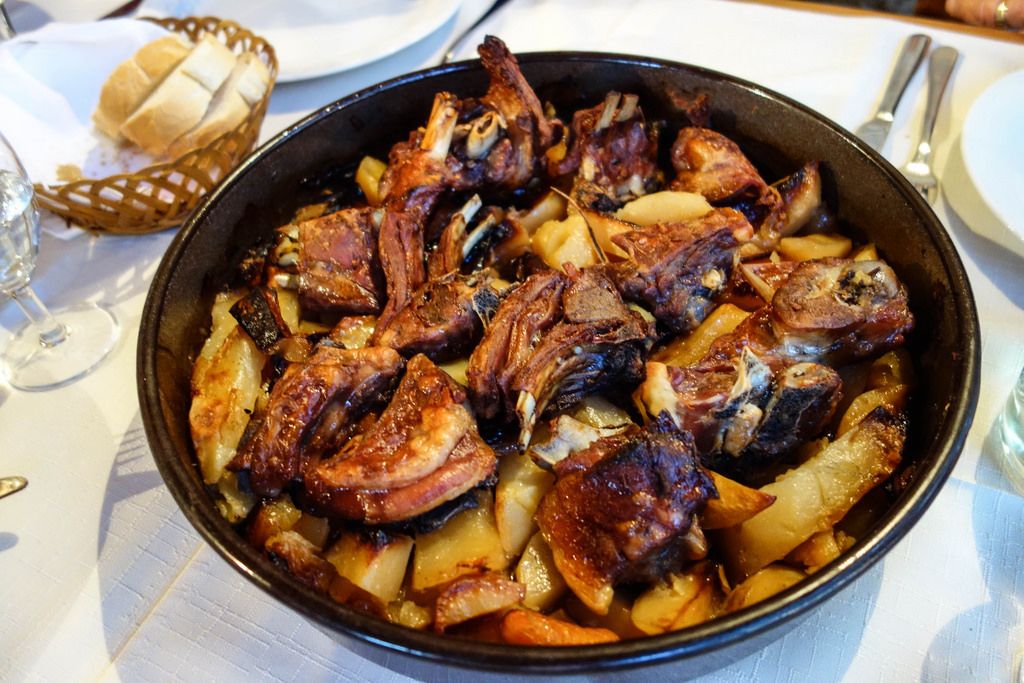
Photo credit: Flickr, traditional Lamb Peka
Every island has its own delicacy or speciality, and it would be a sin not to try it all; like a humble Viška Pogača from island Vis, lamb on the spit on island Brač, Žrnovski Makaruni from island Korčula, Pag cheese, lobster in Komiža…
But don’t forget to shop and cook for yourself, especially if you are bareboating. In every destination, you will find fresh fruit and vegetable markets which will have you wondering if you have ever truly tasted a peach or tomato before Croatia?! There are also small fish markets dotted along the coast, don’t be shy, buy some sardines or beautiful seabream to throw on the grill. We have even written a fish glossary and guide to clean and cook sardines to help you out.
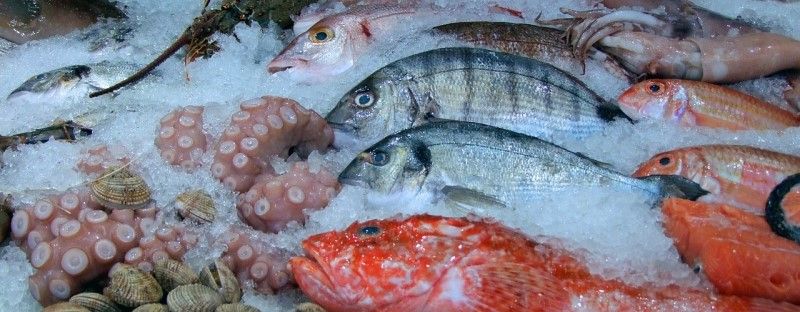
Photo credit: Pixabay, fresh seafood
Now, can you see what Anthony Bourdain was talking about? And this is without even mentioning some of the phenomenal restaurants… but you can read about the Michelin restaurants along the coast in our Michelin sailing guide.
20. Wine along the Coast
Now, we can’t very well speak of food and not mention wine. You may be surprised to know that this tiny, obscure country produces some absolutely world-class wine and has more than 130 indigenous grape varieties. Many of these wineries are available to visit along your sailing Croatia journey – wine tour by boat, what could be better!
As most sailing itineraries focus on Central and Southern Dalmatia, this is what we will focus on but inland and Northern Croatia also produce exceptional wines, particularly whites. Dalmatia is the king of reds and also produces some unique, full-bodied whites.
Sailing around Primošten, it is impossible not to notice the vineyards rising from harsh stone landscapes, here you will find Babić wine – synonymous with the region. Babić is a deep ruby-red, full-bodied wine typically 13 – 15% alc. which may seem heavy for summer but goes well with lamb or even a rich fish stew (brujet).
Heard of Zinfandel, one of California’s most famous grapes? Of course you have, but did you know that Zinfandel’s origins flow back to Croatia? Just outside Split in Kaštela, it was discovered that the grape Crljenak Kaštelanski (also known as Tribidrag, Kratošija and Pribidrag) is the native origin of Zinfandel. While the name doesn’t exactly roll off the tongue, this red has a gorgeous, distinguished palate that is a must-try for all wine lovers and connoisseurs.
Island Hvar is famous for Pošip and Plavac Mali (the most common red wine produced in Dalmatia), and the lesser-known indigenous white grapes Bogdanuša and Kuč. Notable wineries on Hvar are Sveta Nedjelja (Zlatan Otok), Tomić, PZ Svirce (Ivan Dolac) and for a more personal experience, you can have a private wine tasting with Master of Wine Jo Ahearne. For organised wine tours, Hvar Wine Tours is one of the best agencies, offering an array of unique and varied tours.
On Vis island, don’t sail by without trying the local white wine Vugava, it goes well alongside a piece of local Vis pie. Korčula island is most well-known for whites Pošip and the indigenous Grk which only grows in a small nearby town, Lumbarda. Pelješac Peninsula is not on every sailing itinerary but it should be, especially for food and wine lovers. Plavac Mali is the grape grown in this region and Dingač and Postup were the first appellations of this grape. Notable wineries here are Korta Katarina, Miloš, Matuško and Saints Hills. Easy to see how sailing in Croatia could become a food and wine tour.

Photo credit: Mario Romulić, vineyards
21. Learning to Sail in Croatia
For some, the appeal of sailing in Croatia is doing it themselves, minus the crew. What if you have a skipper’s license but don’t quite have the experience or confidence to bareboat? Learning to sail in Croatia is an option. Can you learn to sail in one day? No, not if you want to have the necessary skills and confidence to bareboat, anchor, dock and deal with precarious weather situations. There are a number of sailing schools in Croatia which offer 5 – 7-day courses. In 2017 we attended a course with Ultra Sailing School who are one of the most well-established companies in Split. The course covered everything from ‘anatomy’ of the boat, sailing manoeuvres, safety, emergency manoeuvres (man overboard etc.), anchoring and docking. A basic 6-day course costs between 500 – 700€. Nava boats also offer a 4-day skipper training on their elite racing performance X-Yachts, this is more for people looking to fine-tune their skipper skills. The course costs 450€ per person, plus 850€ per cabin (as stay aboard overnight).
If you want to put your sailing skills to the test, Croatia has a number of competitive, friendly and even charter regattas. The Hanse Cup Adriatic is a fantastic charter regatta open to all, so everyone has the opportunity to experience the camaraderie and thrill of racing.
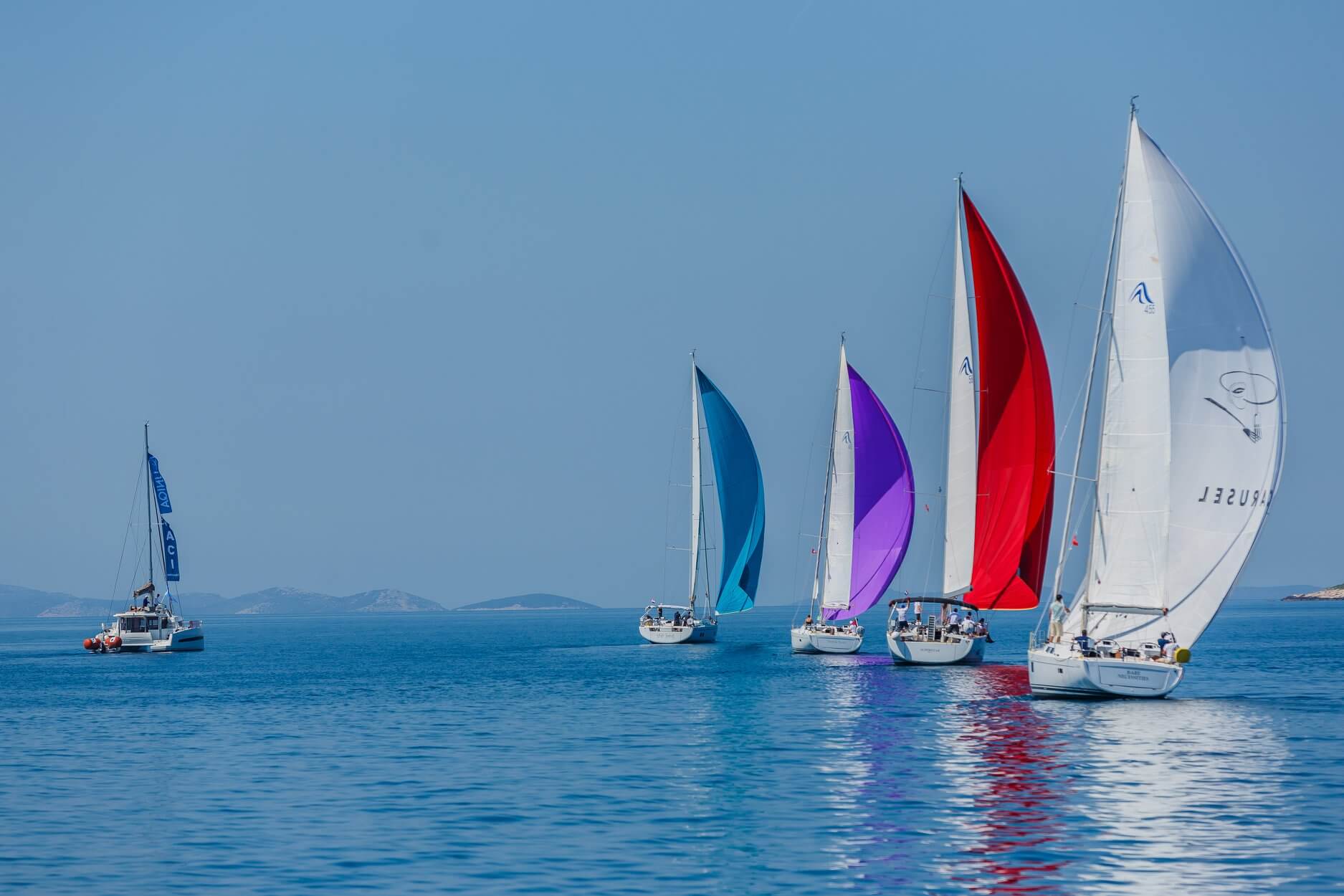
Photo Credit: Croatia Yachting and Hanse Cup Regatta
22. Do I need prior knowledge about boats if I charter with crew?
Technically, if you charter a boat with crew, you don’t need to know anything about boats as your crew is there to take care of you. This is especially the case with luxury boats, whose crew are there for your every want and need. However, if you are chartering a smaller sailing yacht or are joining a flotilla with only a skipper, it is advisable that you learn some basics. The skipper or crew will no doubt teach you as the week progresses but it would be helpful to learn some basic knots and terminology before boarding.
If there is only one experienced crew member aboard, then the skipper will enlist help when it comes to docking and anchoring; this is especially important in bad weather. If you could do three things to step aboard prepared, it would be: learn how to tie fenders, a bowline and cleat hitch, and learn basic lingo so you know what a cleat and fender are. Thankfully, the wonders of the internet and YouTube make it super-simple these days.
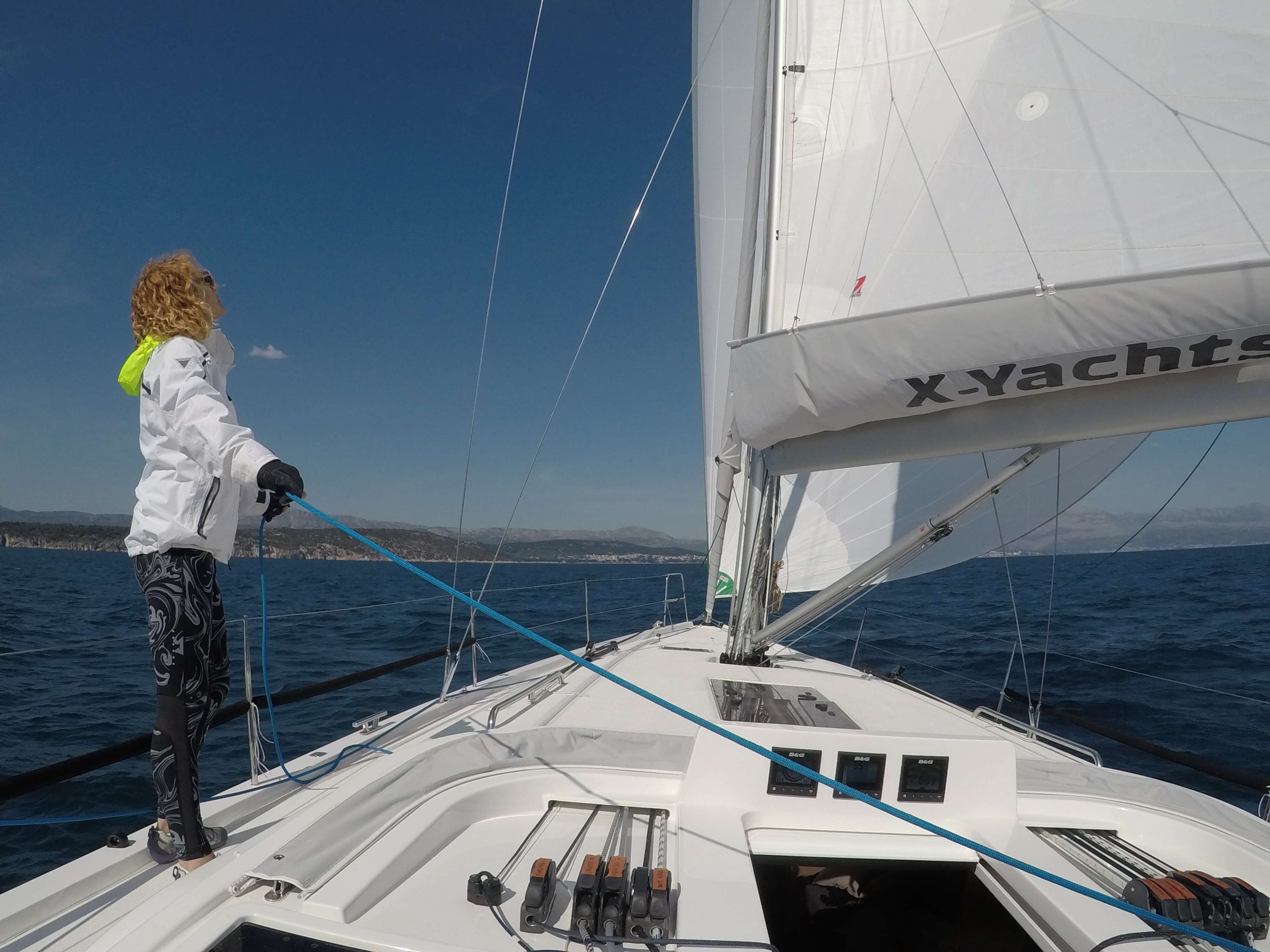
Photo credit: Tash Peričić
23. What is included in my charter?
When you charter a bareboat, the company you charter with should do a complete run-through of the vessel, to note whether everything is aboard, working and to agree on damages already present. When it comes to bareboats, like the name, they are typically chartered bare – except for linen, any extras need to be requested. If you charter with crew, then the skipper is responsible for the check-in procedure.
On mini-cruisers and cabin charter, half-board (breakfast and lunch) is normally included and drinks are done over a bar tab system. On a private or luxury charter, guests have the option of paying for full or half-board and drinks in advance. Every boat varies slightly as to what is provided: water-sports equipment, toiletries, beach towels… if your yacht has a jet ski, they are typically charged extra per hour (up to 150€ per hour). So, pay attention to the fine print of your cruise or charter to be sure what is included. Remember to pack chargers, toiletries, likes of fishing and diving licenses if you wish to do so, and drivers license if you intend to rent scooters or quads.
24. How much will I spend? What should I tip?
In all my years working as a tour guide and on yachts, this was always my favourite question – how much will I spend in Croatia? There is no cut and dried answer to this question for obvious reasons but a few notes… Many make the mistake in thinking that Croatia is a cheap destination, which, perhaps it was 10 years ago but it is certainly not the case now, especially in highlight destinations and peak-season. Croatia is on par with the rest of Europe now when it comes to the basics: accommodation, food and entertainment. Let’s say that you have paid for your sailing in Croatia holiday, on average, I would advise allowing an extra 50 – 70€ per day for dining out, drinks and entertainment or activities. Of course, Croatia can be done on a budget, but this is the average spend that I have seen from those in their 20’s through to 70’s.
Do I need to tip? The short answer is yes. Unless you received abysmal service and care, tipping is expected.
What should I tip? In restaurants the customary 10% is polite. On boats, for cruises with 30 or more passengers, 10 – 15€ per person per day is recommended to cover crew, while guides are often tipped separately on a discretionary basis. On private yacht charter, the MYBA recommends 5 – 15% of the weekly charter fee as the standard rule.
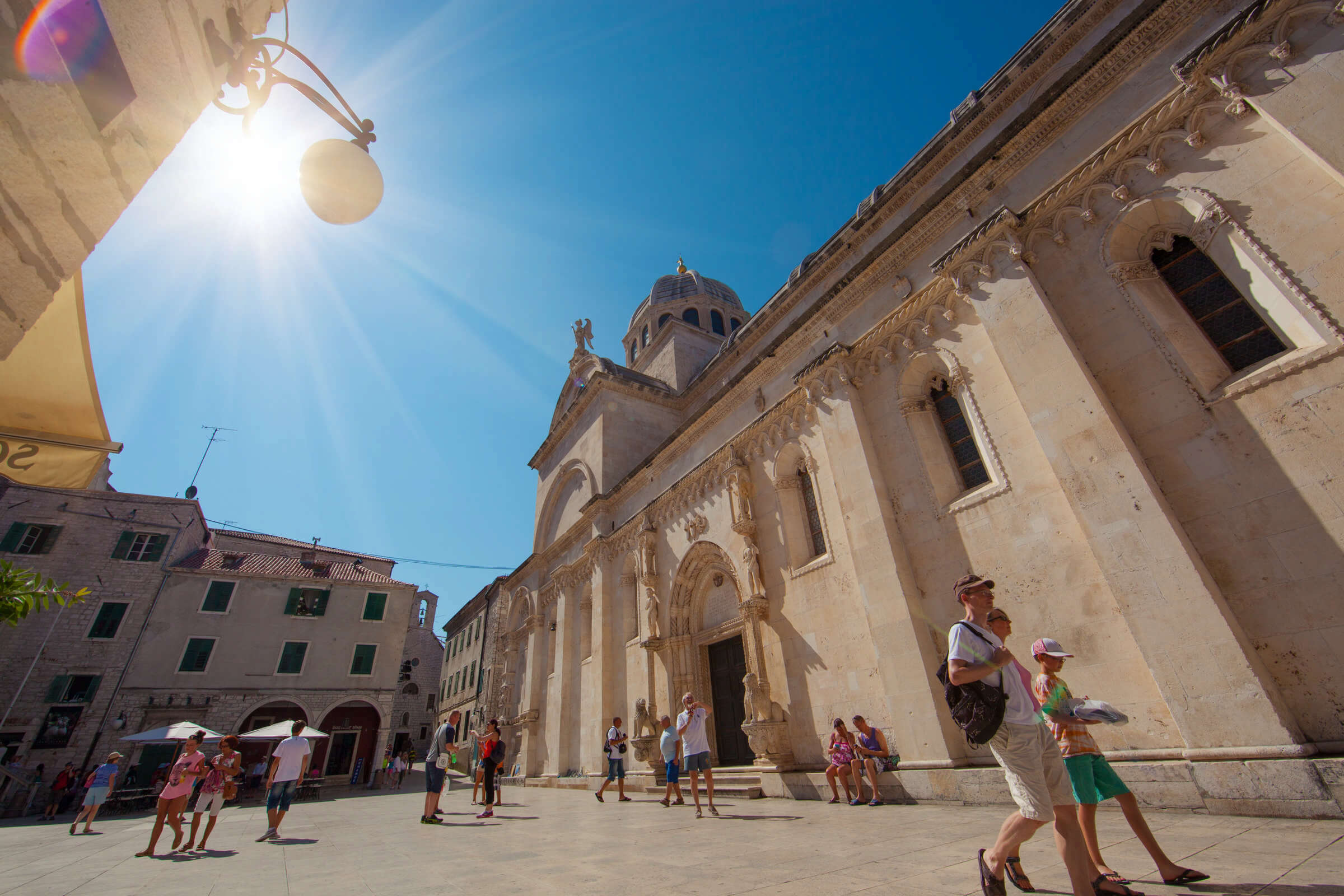
Photo credit: Mario Romulić, tourists in the main square of Šibenik in front of St James Cathedral.
25. Take Care of our Adriatic
If you come sailing in Croatia, please actively take care of our Adriatic so future generations can also enjoy this Adriatic paradise. There are many simple things you can do at sea to make less of an impact on the environment: don’t wear sunscreen while scuba diving, reduce plastic usage aboard – shop at local markets and use reusable bags, use wooden pegs to hang clothes out, don’t empty your blackwater near any shorelines, marinas or in bays. Lastly, if you see it, pick it up. Why not make an active positive impact when you come sailing in Croatia? Read more sustainable tips at sea.
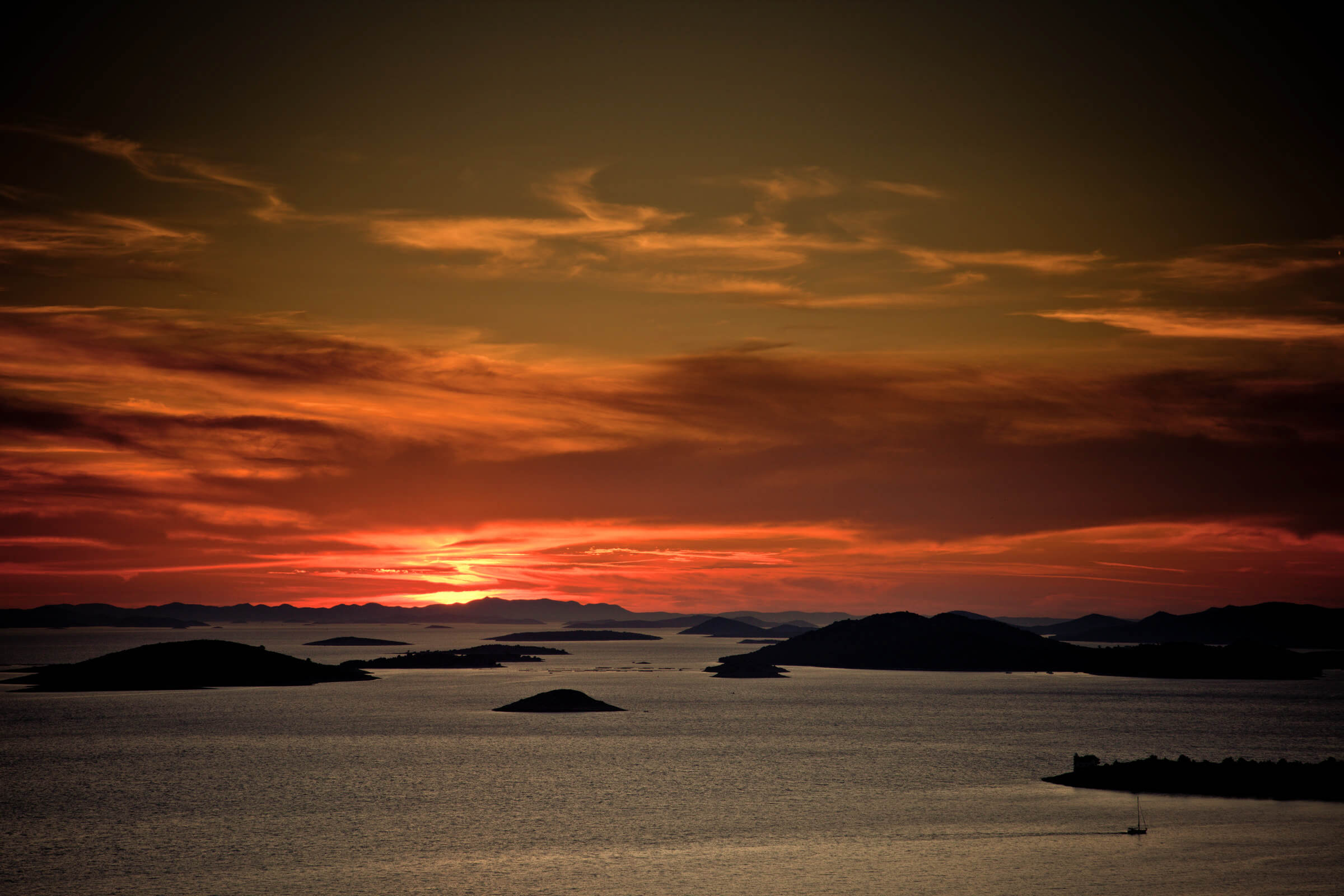
Photo credit: Mario Romulić, sunset over the Kornati
Relax and Enjoy
Phew. If you made it this far, congratulations, you’ve already shown a sailor’s industrious attitude. This may seem like a lot of information to take onboard but we promise, once you work your way through the major questions – when, which boat, what region… the rest will be smooth sailing. And while we advise looking ahead to the destinations you may want to visit and activities you are interested in, we don’t recommend planning every minute of your days. After more than five years sailing in Croatia, my guests’ highlights have always been the simpler pleasures – going barefoot for a week, lying beneath the sails or stars, an afternoon siesta after a gorgeous feast. So, remember to relax and enjoy because this is what sailing in Croatia is really about.
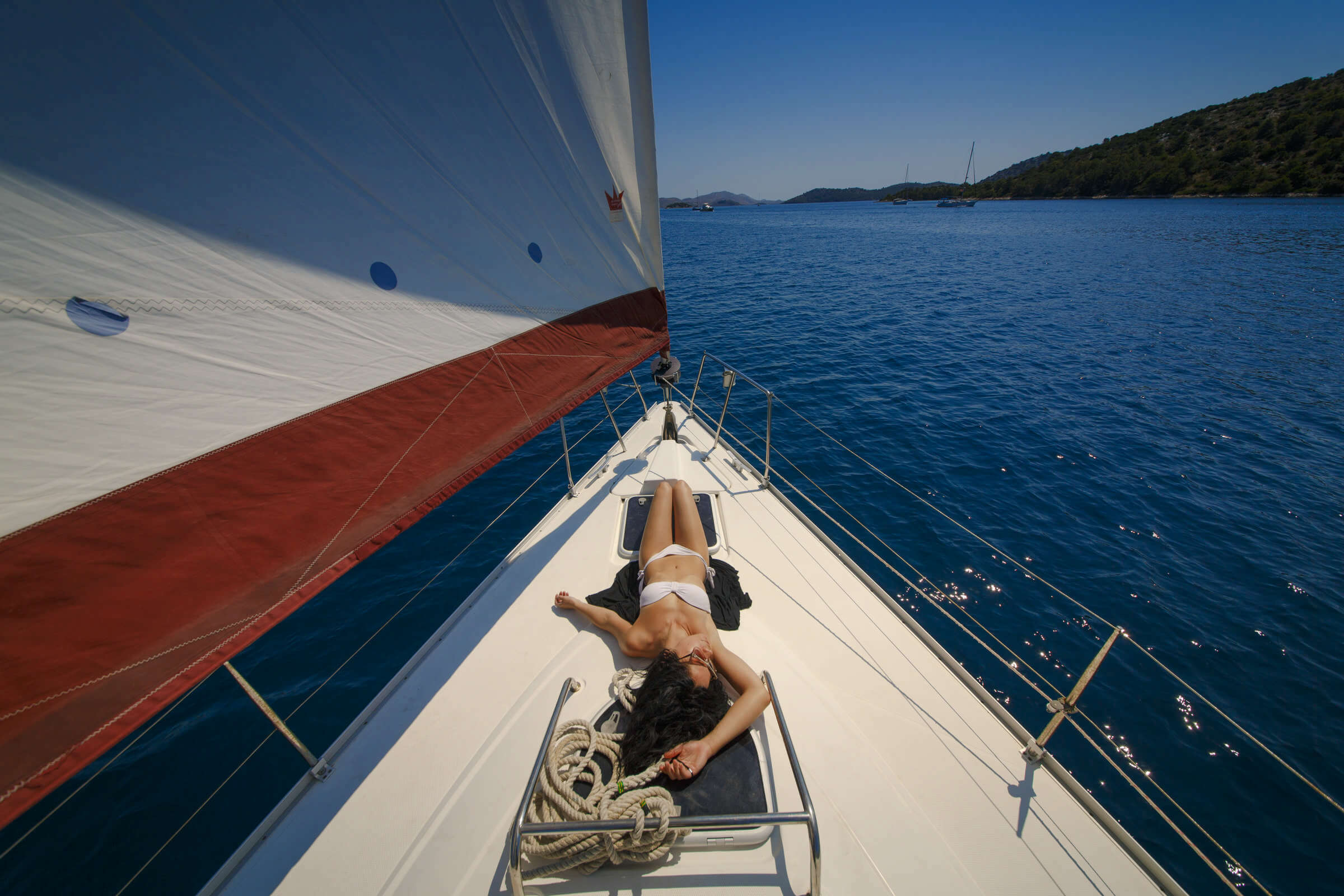
Photo credit: Mario Romulić, relax and sail
For all you need to know about sailing in Croatia, visit our Total Croatia page.

